The NSCDA Presents: Women of Vision

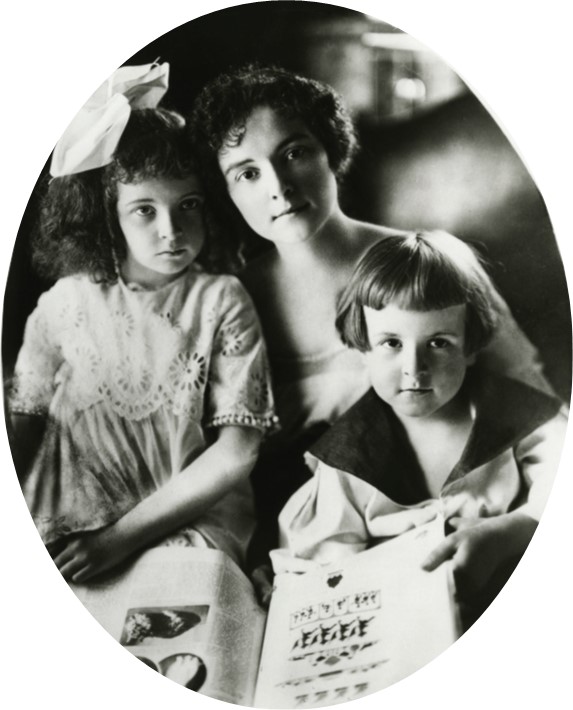
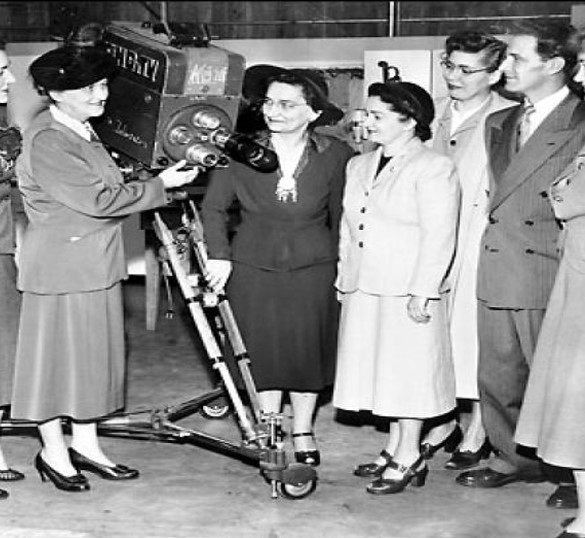
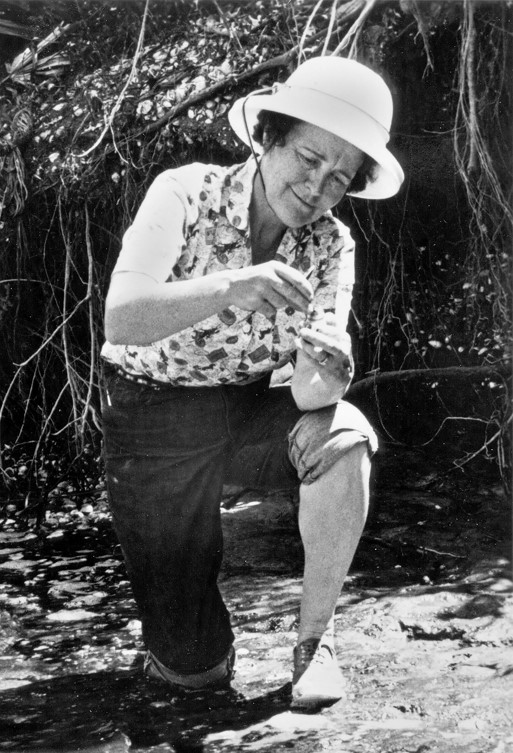
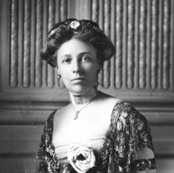
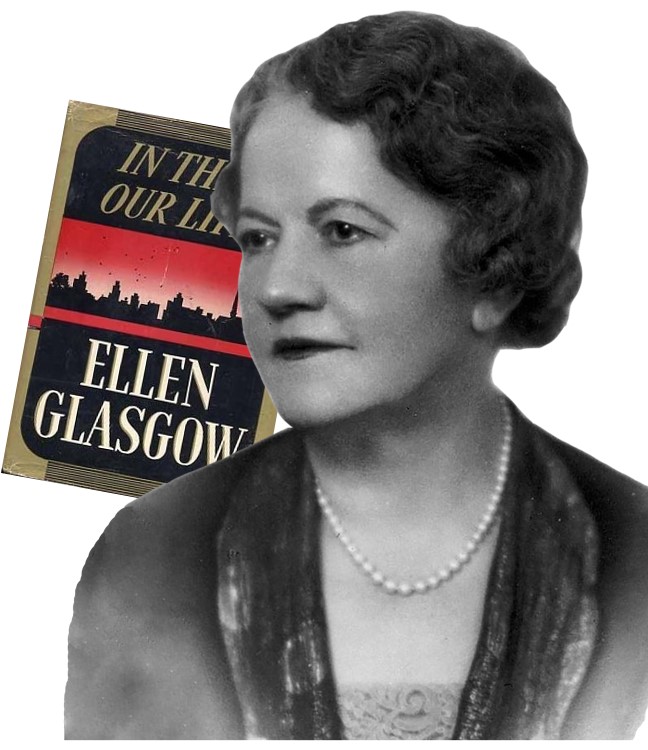
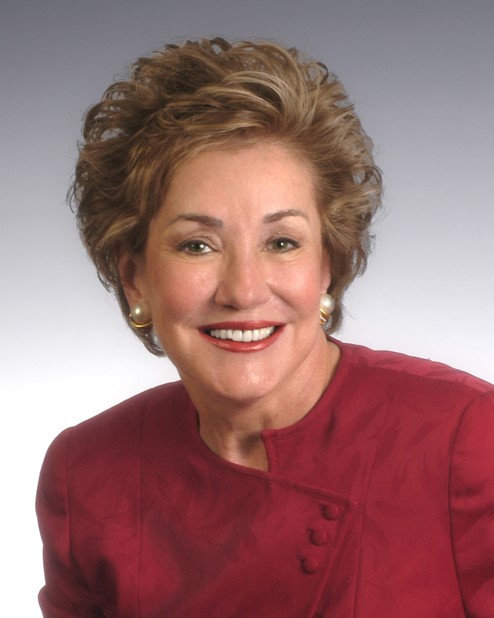

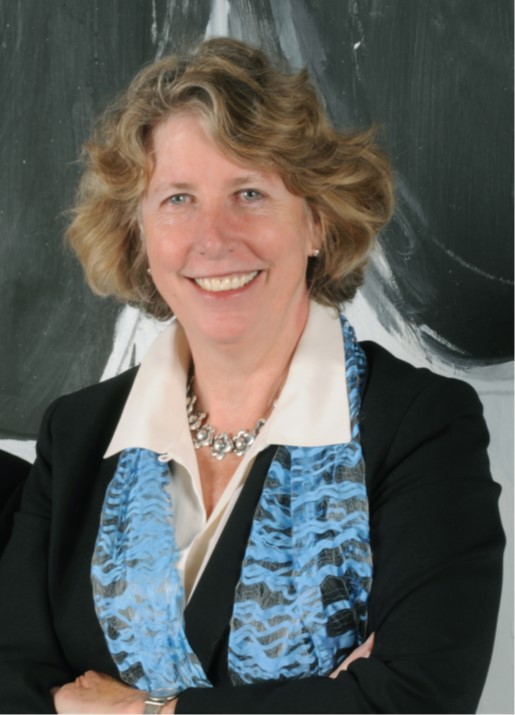
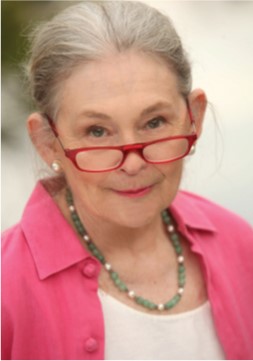
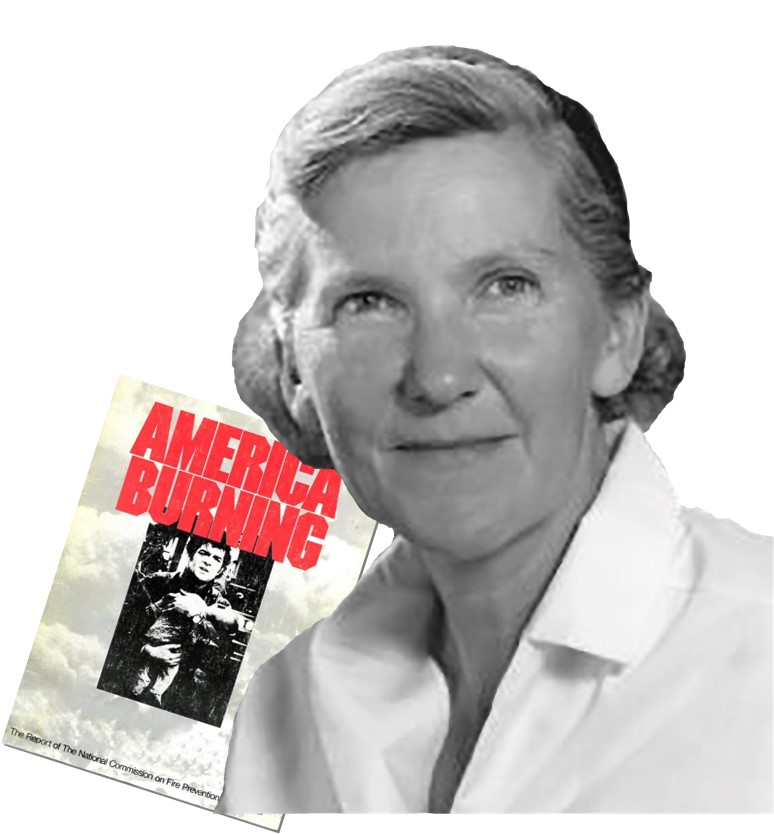
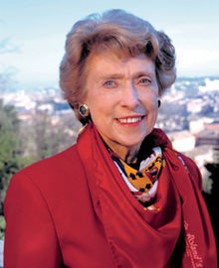
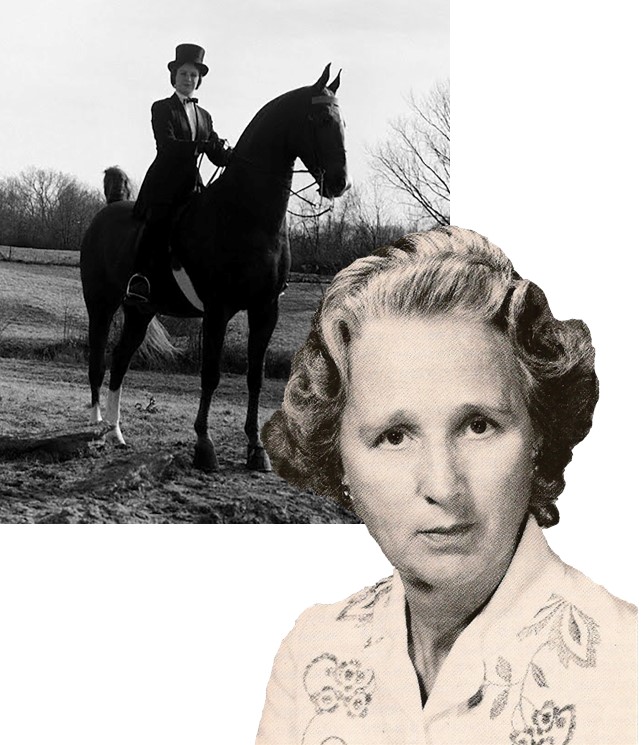
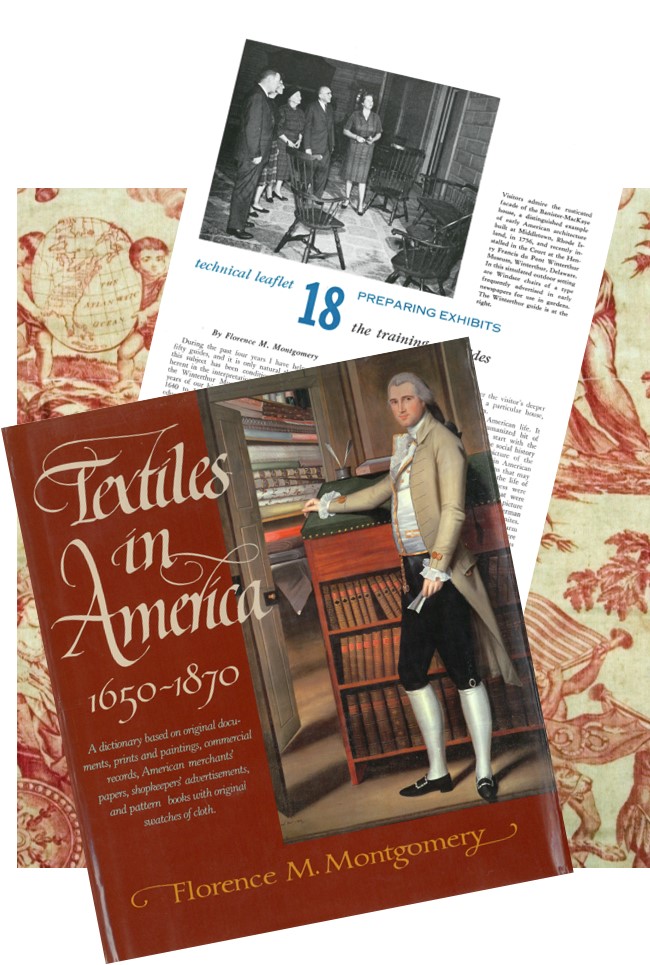
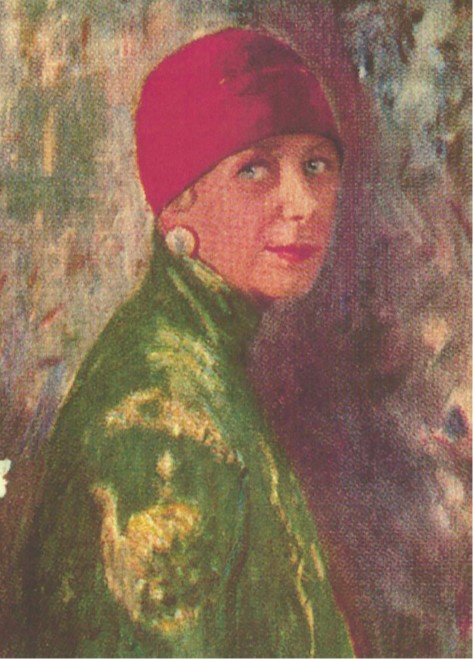
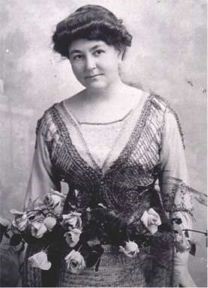
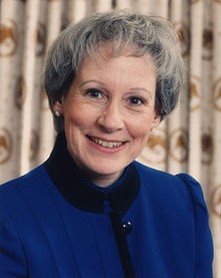
In 1891, a group of women in Pennsylvania founded a society for historical preservation. The other original states were invited to join their society and three immediately accepted. They would go on to organize themselves while maintaining their original state identities. Today, there are 44 such corporate societies, associated under the rubric of The National Society of The Colonial Dames of America (NSCDA).
The NSCDA mission states three objectives: historic preservation, patriotic service, and education. But who were, and who, today, are the women who join and support the NSCDA? While they take pride in their familial connections to America’s colonial days and happily support preservation of historic sites, documents, and artifacts, these women have many diverse interests and abilities, and their individual accomplishments are impressive.
Highlighted here are 20 outstanding women of the NSCDA. Their stories exemplify courage, compassion, and leadership. Some are imaginative and daring, others creative and artistic. But again and again, we find a concern to preserve the past, serve the present and, educate for the future.
Some of these women are well known public figures:
Juliette Gordon Low
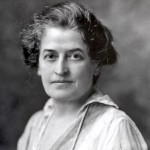 1860-1927
1860-1927
Juliette Gordon Low founded the Girl Scouts of America in 1912 with a troop of 18 girls. In 2012, President Obama awarded her posthumously the Presidential Medal Freedom, celebrating “her dedication to empowering girls everywhere.”
Representative Lindy Boggs
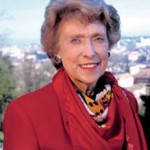 1916-2013
1916-2013
Representative Lindy Boggs (D, LA: 1973-1990) was said to occasionally achieve legislative goals by judiciously using southern charm. She handwrote protection for women into the printed version of the Equal Credit Opportunity bill, then assured the other (male) committee members, she was sure the omission was merely an “oversight.” It was enacted as she perfected it.
Senator Elizabeth Dole
 1936-
1936-
Senator Elizabeth Dole (R, NC: 2003-2009) had previously held two Cabinet positions. While Secretary of Labor, she focused on workplace and public safety; as Secretary of Transportation, she worked with MADD to achieve legislation increasing the drinking age and providing uniformity across the fifty states. She utilized incentives to ensure that cars would be equipped with air bags and that state laws were passed mandating the use of seat belts. Moving from government to the private sector, Dole served as president of the American Red Cross for eight years.
Senator Nancy Kassebaum
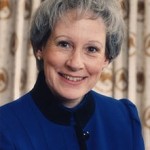 1932-
1932-
It might be hard to believe, but when she took office 1978 Nancy Kassebaum became the first woman ever elected to a full term in the Senate without her husband having previously served in Congress. And, she was also the first woman to represent Kansas in Congress!
During her tenure, she earned a reputation as an independent and determined voice on social issues, working with Senator Ted Kennedy to reform health insurance and supporting women’s rights, and championing funding for the National Endowment for the Arts (NEA) and for federal student loan programs.
Her philosophy was simple, “to be a good Senator, you need to be willing to work with people. You don’t need to be a professional politician.”
In her last term, she chaired the Senate Committee on Labor and Human Resources making her only the second woman to chair a Senate standing committee. Senator Kassebaum served from 1978 to 1997 now lives in Kansas.
Helen (“Nellie”) Taft
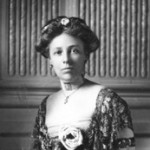 1861-1943
1861-1943
Helen (“Nellie”) Taft, First Lady from 1909-1913, had wide-ranging interests. In 1900, as wife of the Governor-General of the Philippines, she shattered tradition by including native Filipino personnel at official social functions. As First Lady, Mrs. Taft persuaded Cabinet members to support improving conditions for Federal employees, a goal formalized in a 1912 Executive Order. Best-known is Nellie Taft’s gift of West Potomac Park, with its thousands of Japanese cherry trees, the first two planted by the Japanese ambassador’s wife and Nellie Taft in 1912.
Ellen Axson Wilson
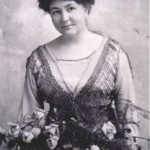 1860-1914
1860-1914
Ellen Axson Wilson, a talented landscape artist, was First Lady from March 1913 until her death in August 1914. During this time, Mrs. Wilson advocated for the mentally ill, against child labor, and for better working conditions for women. Appalled by the living conditions in the alleys of Washington, she personally led Congressmen on tours there. Shortly after her death, Congress passed the Alley Dwelling Act of 1914.
——————————————————
While the women above are familiar names, there are dozens more women who have left a lasting impact on society that you may not know. We are honored to share their stories and contributions.
Emily Warren Roebling
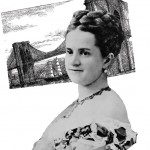 1843-1903
1843-1903
Emily Roebling supervised (some even thought “engineered”) construction of the Brooklyn Bridge for thirteen years until its completion in 1883 after her husband, its chief engineer, became incapacitated. She later served as construction foreman at a camp on Long Island for soldiers returning from the Spanish-American War. In 1899, three years before her death, she earned a law degree.
- Read More about Emily Warren Roebling
Born in 1865, the youngest of 12 children, it’s unlikely that Emily Warren could have ever imagined that she would one day supervise the construction of one of the greatest architectural feats of the 19th century.
But that’s precisely what she did for thirteen years as intermediary between the workmen and Washington Roebling, her husband and Chief Engineer of the Brooklyn Bridge.
Washington had taken over construction of the world’s first steel-wire bridge – a project that would connect New York and Brooklyn for the first time – from his father who died suddenly. And then just as suddenly, Washington himself become incapacitated by decompression illness, popularly known as “the bends”.
This left Emily at the helm of an historic engineering project. Her early education at Georgetown Visitation in Washington, DC very well may have played to her advantage; the school for young women was known for its (unusual for the time) emphasis on mathematics and science.
With Washington confined to his sickroom and fearing he would not survive to the project’s completion, Emily began taking copious notes on everything he said related to the bridge. She also started studying on her own, learning about technical issues, materials strength, cable construction, stress analysis and catenary curves.
Each day she went to the bridge, serving as liaison between her husband and engineers, laborers, and city officials. Over time she become so knowledgeable that many believed her to be the actual intelligence behind the bridge.
When it opened on May 24, 1883, Emily was the first person to cross the newly minted Brooklyn Bridge before greeting President Chester Arthur.
At the dedication ceremony, Congressman Abram S. Hewitt stated, “The name of Mrs. Emily Warren Roebling will thus be inseparably associated with all that is admirable in human nature” and continued that the bridge was “an everlasting monument to the self-sacrificing devotion of a woman and of her capacity for…higher education.”
Later in life, Emily served as construction foreman of a camp on Long Island for soldiers returning from the Spanish-American War and in 1899 she earned a law degree from the Women’s Law School of New York University.
Four years later in 1903, Emily died of cancer. The fruits of her dedication, passion for education, and innate independence and leadership are enjoyed by the millions of people who visit the bridge annually.
In 2018, a street in Brooklyn was named after her and numerous books have been written about her monumental feat. She was a member of our New Jersey Society.
Caroline Hazard
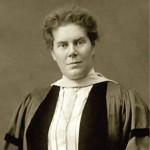 1856-1945
1856-1945
In 1899, Caroline Hazard became Wellesley College’s fifth president. With her connections to the world of philanthropy and sense of diplomacy, she reversed the decline in enrollment, placed the school on sound financial basis, and established four new departments. In 1903, she and her brother supplied financial resources for Joseph Holley, the son of freed slaves, to establish a small training school for African Americans in Georgia. She continued to support both schools until her death.
- Read More about Caroline Hazard
Caroline Hazard, born in 1856, cared deeply about education and left her mark on two very different institutions.
Growing up in a prominent Quaker, Rhode Island family, she was educated by private tutor before entering Boston’s intellectual circles as an accomplished writer. At the same time, she established educational programs for the children of the workers in her family’s manufacturing company.
Caroline’s grandfather Rowland Hazard, an esteemed businessman and abolitionist, served as an inspiration for her budding interest in civic and social engagement. In 1841, while on a business trip to New Orleans, Rowland learned that there were free African-Americans being illegally detained under the guise that they were escaped slaves. He promptly found a lawyer and helped nearly 100 people regain their freedom.
In 1899, Caroline became Wellesley College’s fifth president and the school flourished under her leadership. She was able to reverse declining enrollment, place the school on sound financial footing, and establish four new departments. She hand-selected Frederick Law Olmstead, the father of American landscape architecture, to oversee construction of several new buildings on campus while maintaining Wellesley’s unique and varied topography.
And then one summer she made the acquaintance of Joseph Holley, the son of freed slaves. She (along with her brother Rowland Hazard III) quickly decided to finance the young man’s education at Phillips Academy in Massachusetts and then Lincoln College in Philadelphia. Upon graduation in 1903, Holley returned to his home state of Georgia and the Hazards supplied the financial resources to enable him to establish a small training school for African-Americans in the area. Today that school is Albany State University, a public historically black university for which Holley served as President for 40 years.
Caroline continued to support both schools until her death in 1945 and was a member of our Rhode Island Society.
Ellen Glasgow
 1873-1945
1873-1945
Ellen Glasgow’s novels illuminate the social changes she witnessed throughout her life in Richmond, Virginia. Born shortly after the Civil War, she saw the capital of the Confederacy become urbanized and industrialized. She witnessed some people discard the old mores, while others suffered the consequences of clinging to them. The 1942 Pulitzer Prize she received was thought by many to acknowledge the importance of not just one novel, but of her entire lifetime’s writing.
- Read More about Ellen Glasgow
Pulitzer Prize novelist Ellen Glasgow was a chronicler of social change. She has been described as “the first really important Southern novelist.” Born in Richmond, Virginia shortly after the Civil War, she was one of numerous children in a middle class home “raised by an attentive black housemaid and protective parents.” She was largely self-educated, and had a brief career as a southern belle. However, her eclectic reading enabled her to see clearly the drama of the changing South. Born in the 19th century and observing well into the 20th, Ellen Glasgow’s earliest writings rejected the church, an institution that upheld the old code of chivalry. Later, she looked at Richmond society, at both the whole and at individuals, and wrote of the destructive consequences of clinging to old, imprisoning standards of womanhood in the midst of a world becoming rapidly industrialized and impersonal.
The preeminent historian of the South, C. Vann Woodward wrote that when later and better known writers, such as Thomas Wolfe and William Faulkner, disclosed the intensity and tragedy of society’s demands in the lingering, post bellum South, “they could find scarcely a theme that Ellen Glasgow had wholly neglected. . . . [She] bridged the gap between romanticism and realism.”
Ellen Glasgow received awards from the American Academy of Arts and Letters and from the Saturday Review of Literature. The Sheltered Life (1932) is considered by most critics of Southern literature to be her greatest work, although the Pulitzer Prize she won for a 1942 novel is said to be in recognition of her lifetime’s achievements.
Anne Dallas Dudley
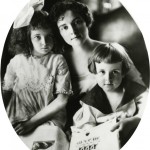 1876-1955
1876-1955
As a married woman and mother in the first decade of the 20th century, Anne Dudley was actively involved in the temperance movement. Through that and her engagement with other “activists”, she became convinced that women needed the vote. In 1914 she led the first suffrage demonstration in Nashville, and often appeared with her two children, proving a woman can be a loving mother and an activist. In August 1920, with Anne Dudley lobbying state legislators, Tennessee became the 36th state to ratify the Nineteenth Amendment.
- Read More about Anne Dallas Dudley
Anne Dallas Dudley, born in Nashville, Tennessee in 1876, was a woman unafraid to fight for a cause. She was actively involved in the temperance movement and became convinced that women needed the vote, both for themselves as complete individuals and for the sake of the country. “This is a government of, for, and by the people, and only the law denies that women are people,” she was quoted as saying in 1913.
Women’s suffrage in the South was a particularly fraught cause, entangled with issues of race and states’ rights. Nonetheless, in 1914, Anne Dudley led the first suffrage demonstration in Nashville.
At many events, she appeared with her two children, proving a woman could be a loving mother and an activist. She organized the Nashville Women’s Suffrage League, was President of the State Equal Suffrage Association, and finally served as a vice-president of the National American Woman Suffrage Association (which in 1920 became the League of Women Voters).
In August 1920, with Anne Dudley lobbying her state legislators, Tennessee became the 36th state to ratify the 19th Amendment and provide the final vote needed to make women’s suffrage the law of the land!
Rue Winterbotham Carpenter
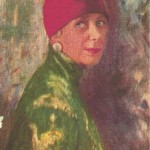 1876-1931
1876-1931
Rue Winterbotham Carpenter acquainted Chicago with Modernism in the fine and decorative arts. She was a founder of the Arts Club of Chicago and arranged the first shows in that city of many artists. She also designed private and a few commercial interiors –fearlessly mixing periods, styles, and colors, and creating Elizabeth Arden’s instantly recognizable Red Door. And, with two other women, she inspired a Picasso drawing that has recently been acquired by a private collector.
- Read More about Rue Winterbotham Carpenter
You might not know the name Rue Winterbotham Carpenter, but chances are you’ll soon be surprised by her influence on the art world…
Rue Carpenter’s family resided in Chicago and traveled extensively in Europe in the early years of the 20th century. There she became acquainted with modernism in painting, sculpture and dance. Her husband, a noted musician and composer, was a college friend of Gerald Murphy (the Murphys were the “beautiful couple” in Fitzgerald’s Tender is the Night).
Through these connections, the Carpenters participated in the European art scene and in the summer of 1923, they were guests of the Murphys on the Cote d’Azur in France together with Picasso and his wife. A month later, Picasso, referencing a photo of Rue, her daughter, and a third woman in bathing dress on the beach, drew Trois Nuis Feminins.
Rue brought the modern arts to Chicago. She was a founder, and for more than a decade, president of the Arts Club of Chicago. She arranged the first show of Picasso drawings in Chicago, as well as exhibitions of work of other European artists such as Rodin and Braque.
Carpenter was also a noted interior designer –fearlessly mixing periods, styles, and colors, and creating Elizabeth Arden’s instantly recognizable Red Door branding.
Dorothy S. Bullitt
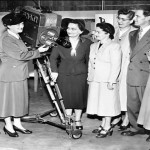 1892-1989
1892-1989
Dorothy Bullitt established herself in the Seattle business community in the 1930s. She then purchased a small radio station to play only classical music, still ranked today one of the best such stations. She purchased the first TV station in the northwest in 1949, which was soon known for fearless investigative reporting and news presentation. She built her privately held KING Broadcasting into one of the largest media companies on the West Coast.
- Read More about Dorothy Stimson Bullitt
Dorothy Stimson Bullitt became an unexpected business mogul – showing innate savvy and investing in unproven mediums – during a time when women were not welcome in the business world.
Dorothy was born in Seattle, Washington in 1892. Her father started the Stimson Lumber Company and earned a fortune during the Klondike gold rush when the cost of wood skyrocketed. With some of the earnings, he invested heavily in Seattle real estate.
Dorothy grew up watching her mother champion cultural and civic organizations in the city – she helped found the Seattle Children’s, the Seattle Symphony, and the Visiting Nurse Service.
She received an elite education, married in 1918 and had three children.
Dorothy’s life shifted dramatically however when her father died in 1928, followed shortly by the deaths of her brother and her husband. Now a widow at age 40, she was left to raise three children and manage the family’s real estate empire.
It was the depths of the Great Depression, tenants were leaving in droves, and Dorothy knew very little about real estate. Nevertheless, she took charge and was able to maintain the financial health of the company and in the process earned the respect of Seattle’s business community.
In 1947, Dorothy took a chance and purchased a small, failing radio station. She flipped formats, secured the call letters KING, and committed the station to only playing classical music. To this day it is still one of the top five best classical stations in the country.
She purchased the first TV station in the northwest in 1949 (there were only 6,000 TV sets in Seattle at the time), which was soon known for fearless investigative reporting and news programming. She built her privately held KING Broadcasting into one of the largest media companies on the West Coast.
By 1977, management and ownership of KING Broadcasting had been passed to her children, though Dorothy stayed active in the company until her death in 1989. Her children posthumously donated Classical KING FM 98.1 to the Seattle Council on the Arts.
She was a member of our Washington State Society.
Ruth Patrick
 1907-2013
1907-2013
Ruth Patrick studied freshwater streams and rivers worldwide. She developed a new approach to assessing their health (or pollution) by measuring the variety of living organisms present. She assisted Congress in formulating the Clean Water Act of 1972, and advised Presidents Johnson and Reagan on water pollution and acid rain. In 1996, President Clinton awarded Dr. Ruth Patrick the National Medal of Science.
- Read More about Ruth Patrick
“I remember the feeling I got when my father would roll back the top of his big desk in the library and roll out the microscope… it was miraculous, looking through a window at a whole other world.”
Ruth Patrick was a pioneer in studying the health of freshwater streams and rivers and her work laid the scientific groundwork for modern pollution control efforts.
Born in Topeka, Kansas in 1907, Ruth’s father took her for afternoon walks as a child to study nature. At age seven, she was gifted a microscope of her own – a gift that would shape the rest of her life.
Not only did her father foster a love of science and nature, he also encouraged her to pursue higher education. She studied biology at Coker University and then went on to receive a masters and then her Ph.D in botany from the University of Virginia in 1934.
She found work at the The Academy of Natural Sciences in Philadelphia although she was only taken as a volunteer – for eight years. Despite this inauspicious beginning, her scholarship, field work (wading in about 850 streams and rivers, she estimated), and seemingly boundless energy resulted in being placed on the payroll in 1945 and appointed Chair of the Academy’s Board of Trustees in 1972.
Dr. Patrick’s pioneering breakthrough came in 1948 while leading a study of the Conestoga Creek in Pennsylvania. Her specialty was studying diatoms (a type of single-celled algae) and she was able to prove that measuring the kinds and numbers of diatoms in a water source revealed the type and extent of pollution present.
In essence, biological diversity holds the key to understanding environmental problems affecting an ecosystem. This discovery became the fundamental basis for the study of environmental science and was dubbed the Patrick Principle.
She authored over 200 scientific papers, invented the diatometer (a device to more efficiently collect and study diatoms) and her work lead to the discovery that The Great Salt Lake was once a freshwater basin.
Dr. Patrick believed in working with government and industry partners to curb water pollution and was a consultant in developing environmental policies for both. In 1975 she became the first woman and first environmentalist to serve on the DuPont board of directors.
Her skill and reputation led the Atomic Energy Commission to seek her advice before building a plant on the Savannah River, led Congress to ask her assistance in formulating the Clean Water Act of 1972, and led Presidents Johnson and Reagan to seek her counsel on water pollution and acid rain.
In 1996 President Clinton awarded Dr. Patrick the National Medal of Science.
She lived to the age of 105, passing away in 2013, and was a member of our Pennsylvania Society.
Florence M. Montgomery
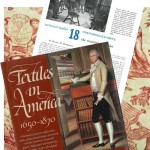 1914-1998
1914-1998
Florence Montgomery, a “scholar of international significance”, made the subject of historic textile furnishings in America her own. The decorative arts in mid-20th century America –particularly furniture, porcelain, and silver– were collected, studied, and written by men. She focused on “soft” materials that decorated windows and protected or enhanced furniture. Her 1984 crowning achievement, Textiles in America: 1650-1870, is still viewed in the museum world as the authoritative text in its field.
- Read More about Florence M. Montgomery
Florence Montgomery has been called a scholar of international significance in the field of textiles used in America in the 17th, 18th, and 19th centuries. However, she followed a route somewhat different from several of the others in this exhibition. Represented by her published work, in particular her seminal Textiles in America: 1650-1870, she achieved this status in what had been largely a man’s world –the furnishings of period rooms in historic houses and art museums– but without pushing against the closed doors. Men in the mid-20th century dominated the fields of furniture, ceramics, and silver collection and connoisseurship, whether by accident or design. Textiles to furnish the home was an unoccupied and perhaps “feminine” field.
Montgomery moved from the Metropolitan Museum of Art to the Winterthur Museum in 1949 when her husband took a position there. Her 1955 article describes training the first class of guides to show the newly opened Winterthur rooms. She believed women usually made the best guides, “between the ages of 35 and 50” and might be recruited from organization such as the Colonial Dames. “Guides should be well educated, preferably college graduates…. Above all, it is hoped that your guides will be attractive. Are they people whom you would like to know, who would be pleasant dinner partners?” Montgomery appears to have accepted the 1950s notion of gender appropriateness and worked within its constraints.
Montgomery researched documentary and pictorial sources, since relatively few historic textiles survived. Then she wrote. She wrote articles on the textiles and their use in American rooms, and deciphered their obsolete nomenclature. In America, her articles were published in The Magazine Antiques, and in England, they were published in the Burlington Magazine. Some were even published in France. And without ever holding a significant position in academia, or a senior curatorial position, Florence Montgomery is still recognized as the giant in her field.
Cornelia Atherton Serpell
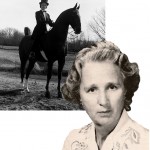 1917-2011
1917-2011
While a student at Sarah Lawrence College in 1937, Cornelia Serpell read a series of articles about the treatment of the mentally ill. Two years later, she volunteered at Central State Hospital, which had been the subject of numerous allegations of patient abuse. Her firsthand experience turned her into an advocate for legislation to protect the rights of the mentally ill. In 1948 she became one of the founders of the Kentucky Association of Mental Health, and strived to bring health care to the underserved.
- Read More about Cornelia Atherton Serpell
While still a student at Sarah Lawrence College in 1937, Cornelia Serpell read a series of nationally-acclaimed articles in the Louisville Courier-Journal, her hometown newspaper, about the treatment of the mentally ill. She was moved to volunteer at Louisville General Hospital’s psychiatric clinic –this at a time when people didn’t even discuss mental illness. Two years later, she volunteered at the badly overcrowded Central State Hospital (formerly the Central Kentucky Asylum for the Insane), the subject of numerous allegations of patient abuse. Her firsthand experience in virtually every area of the 2400 patient state hospital, so unusual for a very young lady from a comfortable background, turned her into a determined, and successful, advocate for legislation to protect the rights of the mentally ill. She was also one of the creators in 1948 of the Kentucky Association of Mental Health.
Serpell strived to bring health care to the underserved –or in some cases bring the people to needed services. She drew on experience from another of her enthusiasms, American Saddlebred horse showing and judging. When her work included children’s clinics in eastern Kentucky, she “and a registered nurse rode on horseback to transport patients.” Later, she chaired fundraising for the first mobile cancer screening unit in Kentucky.
Cornelia Serpell served on many councils and boards, including the Visiting Nurse Association, the Kentucky Commission on Aging, and the Kentucky Legislation Ethics Commission, and received numerous awards recognizing her 75 years’ of work in the field of health services. And in 2003, she was inducted into the World’s Championship Horse Show Hall of Fame.
Anne Wight Phillips
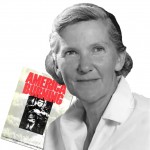 1917-2009
1917-2009
Dr. Anne Wight Phillips announced her vocation at age 5. Although rejected by Harvard Medical School because of her gender in 1939, she was appointed to its faculty in 1949 and to the staff of Massachusetts General Hospital. She specialized in the treatment of burn victims, working tirelessly to educate the public on smoke inhalation’s dangers. Millions of children were taught, “get on the floor and stay below the smoke!”
- Read More about Anne Wight Phillips
Dr. Anne Wight Phillips was a pioneering surgeon in the 1940s, breaking barriers for women in the medical field. She specialized in the treatment of burn victims and became the nation’s leading voice on the dangers of smoke inhalation, educating millions of children to, “get on the floor and stay below the smoke!”
—-
Anne Wight was born in Brookline, Massachusetts in 1917 and at age 5 announced her intention to become a doctor. Upon graduating from Bryn Mawr College in 1939, she applied to Harvard Medical School, but was told “they’d only take women if, due to the exigencies of war, there was no longer an adequate supply of male medical students.”
She was perhaps dismayed but not deterred. She graduated four years later from the University of Pennsylvania, one of the few medical schools that accepted women, and after completing a surgical residency, took great satisfaction in her 1949 appointment to the faculty of Harvard Medical School and the Staff of Massachusetts General Hospital.
In doing so, she became the first woman surgeon on the faculty and the first woman to preform major surgical procedures at the facility.
Dr. Phillips gained much experience working with Dr. Oliver Cope, a recognized expert in the treatment of burn victims. In 1961, when they presented a series of reports citing smoke inhalation as the primary cause of fire victims’ deaths, Phillips became nationally recognized.
The remainder of her career was dedicated to educating the public about the much greater danger posed by smoke than by flames. She founded, and directed for 30 years, the National Smoke, Fire, and Burn Institute and developed “smoke drills” which were taught to millions of school children.
Dr. Phillips was appointed by President Nixon to the National Commission on Fire Prevention and Control, and received numerous national awards, including the Society of Fire Protection Engineers’ “Man of the Year” award. The Home Safety Council and the Congressional Fire Services Institute jointly created an award for fire education, the “Dr. Anne W. Phillips Award.”
She lived to the age of 91 and passed away in 2009. She was a member of our Massachusetts Society.
Robin Woods Loucks
 1941-
1941-
Robin Woods was only 16-years-old when Terrence Roberts and eight other African-American students entered Little Rock Central High School in 1957. Nearly 40 years later, Roberts could only remember the name of one white student who showed them kindness. Robin had moved her chair that first day to share her algebra book with Roberts. For this act of great courage, she and her family were harassed the rest of the year. As strongly as ever, she retains her early conviction that “education can literally transform a region.”
- Read More about Robin Woods Loucks
Sometimes all it takes to make an impact on history is the smallest gesture of kindness and compassion.
Robin Woods was only 16 years old when Terrence Roberts and eight other African-American students entered Little Rock Central High School in 1957. The Little Rock Nine were escorted by Federal troops through a crowd of angry protesters on the first official day of desegregation in the school.
That first day, Terrence was lead to an algebra class and was seated right next to Robin. As the class began and the teacher instructed students to open their books, Robin noticed that Terrence did not have a book and none of the male students offered to share with him.
“I pulled my chair close to his and shared my book with him. I think we both sat there and shook for the remainder of the class,” she recalled.
For this act of great courage and simple decency, she was followed home by cursing, rock throwing white protesters, and she and her family were harassed throughout the entire year.
The next year, the governor closed the city’s four high schools rather than fully integrate them. All of the students, black and white, had to miss an entire year of school or find an alternative elsewhere. Robin took the SAT and went to University of Arkansas at Little Rock but soon dropped out, “I was in no way prepared for college at that point…it took me ten years to go back. In the interim, I tried to just completely erase that year.”
But she’s the first to acknowledge that her experience was nothing compared to the hellish treatment endured by the Little Rock Nine.
Robin eventually went on to earn a degree in psychology, and a Masters in Art. She married, becoming Robin Woods Loucks, and had a family; taught Art Education; founded a real estate firm in the early 1970s; co-edited a cookbook to support the preservation of Villa Marre, an 1880 Victorian home used in filming the TV show Designing Women; and is an active and talented artist.
In 1994, Oprah Winfrey presented a program on that historic school year in Little Rock. Terrence Roberts was interviewed and could only remember the name of one white student who had showed him kindness. Robin Woods Loucks was waiting in the audience, and the two were reunited for the first time in nearly 40 years.
Robin still lives in Little Rock and is a member of our Arkansas Society.
Gail Harrity
 1950-
1950-
Gail Harrity is President and Chief Operating Officer of the Philadelphia Museum of Art (PMA). She has also held senior positions at the Metropolitan Museum in New York and the Guggenheim New York. Harrity was the Guggenheim’s Project Director for planning the Frank Gehry-designed Guggenheim Museum Bilbao in Spain. In 2014, she presented to the public Gehry’s vision for the renewal and expansion of spaces within the PMA’s 1920s Beaux Arts building.
- Read More about Gail Harrity
Gail Harrity is very lucky (but one does make one’s own luck). She has been able to combine her love of fine art with her skills in the world of management and finance of large, world-class museums. After graduating from college and working on Capital Hill for six years, she spent a year traveling, Iran and Afghanistan, the Khyber Pass and India…., all on $2000. She next obtained her MBA from Yale, going directly to a seven year stint at the Metropolitan Museum of Art as its Assistant Treasurer and Chief of Budget, Planning, and Government Relations and then to the Guggenheim Museum in New York.
It was here that, in addition to painting and sculpture, Harrity became truly immersed in contemporary architecture. The Basque Administration in Bilbao, Spain, was developing a plan to revitalize the city. A centerpiece of cultural institution was essential. A partnership was arranged through the Guggenheim Foundation whereby the New York Guggenheim would assist its fledgling sibling, the Guggenheim Museum Bilbao, through the construction process and its acquisition of modern art. Gail Harrity, then New York Guggenheim’s Deputy Director for Project Administration, became the Project Director in planning for the new museum. And since the architect selected to design its building was Frank Gehry, the world renowned practitioner of “post-modern,” “deconstructivist” architecture, Harrity spent much of the next six years flying west to his office in Los Angeles and east to the project site in Spain. The Guggenheim Bilbao opened in 1997.
With its completion, Harrity moved to the Philadelphia Museum of Art (PMA) where today she is President and Chief Operating Officer. Since her arrival, bold plans have been made for the PMA’s future. Its Board had recognized that the nearly century old Beaux Arts building, with its iconic “Rocky” steps, had numerous shortcomings in the 21st century. In what must have seemed an unlikely choice of the architect to renew and enlarge the PMA’s interior spaces, Frank Gehry was selected. However, his designs, displayed in 2014 at the Museum, exemplify “sensitivity to and creative stewardship of” the original architect’s conception. Thus, the “team” of Harrity and Gehry are again at work to serve lovers of art.
——————————————————
Other Notable Dames:
While these women have had an outstanding impact on society, they aren’t the only ones who have done great work. The NSCDA is full of women who have worked for the betterment of women’s rights and society at large. Below are even more women who deserve our praise and respect.
- Guardians of Our Heritage
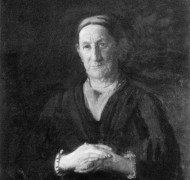
1821-1901
Elizabeth Duane Gillespie
In 1893, Elizabeth Duane Gillespie attempted to have a resolution passed requiring all citizens to display the American flag on June 14. As a result of the resolution, the Superintendent of the Public Schools of Philadelphia directed that Flag Day exercises be held on June 14, 1893 in Independence Square. School children were assembled, each carrying a small flag, and patriotic songs were sung and addresses delivered. Because of this event, many credit Philadelphia as Flag Day’s original home. In 1937, Pennsylvania became the first state to make Flag Day a legal holiday.
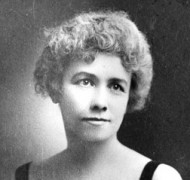
1856-1945
Frances Marion Harrow Hanger
Frances Marion Harrow Hanger was a passionate preservationist who is credited with rescuing historic Mt. Holly Cemetery from neglect. Buried in this cemetery are 10 former governors, 6 U.S. senators, 14 Arkansas Supreme Court Justices, 21 Little Rock Mayors, numerous literary figures, Confederate Generals, and other worthies. Her work helped place the cemetery on the National Register of Historic Places in 1970. Widowed young with two small children, she took a job working a society column for the local newspaper –the first of its kind in Arkansas.
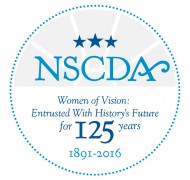
1861-1955
Laura Singleton Walker
Laura Singleton Walker worked tirelessly for land conservation and has a Georgia state park named after her. She advanced the interest of forestry in Ware County by creating a comprehensive program of forestry activities including forest parks, roadside beautification, forestry programs for schools, and forestry legislation. She erected monuments and markers at old trails and historic sites, helped establish a 4-H club, and was an early civil rights activist. The land that became the Laura S. Walker State Park was purchased under a Federal Land Use Areas project and was a National Park until 1941, when it became the 13th state park in Georgia.
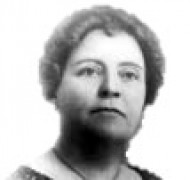
1862-1944
Willie Kavanaugh Hocker
Willie Kavanaugh Hocker is credited as the designer of the flag of Arkansas. After learning that a state flag did not exist, Hocker, along with other citizens, sent flag designs to Secretary of State Earle W. Hodges. Her design was adopted by the state legislature in 1913. After some alterations to her original idea, the final design was set in 1924.
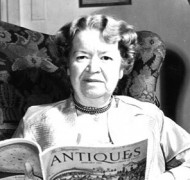
1881-1962
Louisa Watkins Wright Loughborough
Louisa Watkins Wright Loughborough was a pioneer in the field of historic preservation in Arkansas. Inspired by her involvement in the Mount Vernon Ladies Association of the Union, she worked to beautify the Old State House and its grounds. In 1941, she founded the Arkansas Territorial Restoration (now the Historic Arkansas Museum), the first state-supported history museum in the state.
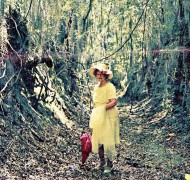
1890-1970
Roane Fleming Byrnes
Roane Fleming Byrnes, of Natchez, Mississippi, was recognized by many as the “Queen of the Natchez Trace Parkway” for her service as president of the Natchez Trace Parkway Association from 1935 to 1969. Her leadership and determination generated support necessary to begin construction of the parkway and to keep the project progressing for over three decades. She was recognized in 1936 for her efforts toward getting a $500,000 bill for right-of-way purchases through the Mississippi legislature. On May 13, 1938, the Natchez Trace Parkway became a permanent part of the National Park Service and in 1966, The American Association for State and Local History presented Roane with an Award of Merit for her leadership in the creation and development of the Parkway. She was a charter member of the Natchez Garden Club and promoted the tours of homes which evolved into the annual Natchez Pilgrimage. She was also instrumental in the preservation of Connelly’s Tavern, the Priest House, and Lawyer’s Lodge. An aspiring writer, Roane primarily wrote children’s stories, two of which were published in St. Nicholas (1928) and Child Life (1930). Additionally, Roane was active in the area of race relations. She made frequent contributions to local African American churches and worked with the Negro Civic and Business League in Natchez to finance a community center for young blacks. In 1960, she called on her fellow citizens to support the Mary Lynch Fund, which sponsored a young black woman in the Ninth International Games for the Deaf in Helsinki. She wrote a number of essays and speeches on the topic of racial harmony and she contributed to the rebuilding of several African American churches burned by white extremists in Mississippi during the turbulence of the 1960s.
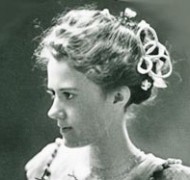
1892-1986
Mary Elizabeth Moody Northen
Upon the death of her father, Mrs. Northen, a Galveston financier and philanthropist, became chairman of the board or president of more than 50 companies her father had controlled, including the American National Insurance Company. She managed the Moody Foundation, which funded the restoration of many of Galveston’s historic structures and also provided the seed money to help establish Texas A&M at Galveston. In her own right, she founded the Mary Moody Northen Foundation, whose trustees were tasked with the restoration of her Galveston home “The Moody Mansion”, which is now maintained as a museum. Her foundation also established and maintains the Mountain Lake Hotel, a nature sanctuary and resort in Virginia. Upon her death, the Texas governor ordered the flags flown at half-staff at state buildings in her honor.
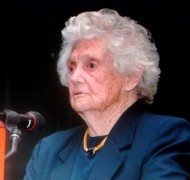
1905-2012
Julia Fifield
Julia Fifield was a member and past president of The Garden Club of Buzzard’s Bay, New Hampshire. During World War II, she was the captain of the New Bedford Red Cross Motor Corps. After the war, she embarked on a career as a landscape gardener. She was very active in Oxford as a member of the school board, chair of the Cemetery Commission, and a longtime trustee of the Oxford Social Library. Julia was instrumental in the founding of the Montshire Museum, a hands-on science museum, and the development of the Magic Carpet program, which continues to this day. Julia was trustee of the Canterbury Shaker Village and Chair of the New Hampshire Preservation Association Review Board. She was active in The Garden Club of America and received the Achievement Award of the Garden Club of America in 1988.
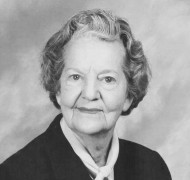
1915-2003
Peg Newton Smith
A pioneer in the field of history and historic preservation, Peg Newton Smith was the founder of both the Arkansas Museums Association and the Quapaw Quarter Association. She served at the Historic Arkansas Museum and was Commission Chair from 1978-1983, and was named Chair Emerita of the Commission in 2002. Peg was appointed to the inaugural Review Committee of the State Historic Preservation Program and was the first Arkansan named to the Board of Advisors of the National Trust for Historic Preservation. She was appointed to the Arkansas Bicentennial Commission and was a founding member of the Board of Historic Preservation Alliance of Arkansas. Peg was honored by many groups, being named 1967 Greater Little Rock Woman of the Year, Shield of the Trojan Award winner from the University of Little Rock Alumni Association in 1979, Fellow of the Museum of Science and History in 1981, and was the first recipient of the Lifetime Achievement Award from the Arkansas Museums Association (AMA) in 2003. The AMA renamed this award the Peg Newton Smith Lifetime Achievement Award in her honor.
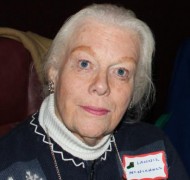
1930-
Lannie McNichols
Omaha native Lannie McNichols’ many years in historic preservation have led, among other projects,to the preservation of Joslyn Castle, the General Crook House and, most dear to her heart, the early revitalization of her historic Dundee neighborhood. She led campaigns to save and restore the antique streetlights, rezone housing to single-family-residential, defeat the intrusion of street-widening and inappropriate structures, and join with others in the building of a library/recreation center in her neighborhood. As a result of Lannie’s work, Dundee was named one of the best neighborhood restoration projects in the country by the National Neighborhood Association. And in 2011, Dundee was listed by the American Planning Board as one of America’s “Top Ten Neighborhoods.” Additionally, Lannie served as President of the Douglas County Historical Society and as President of the Nebraska Wellesley College Cub. She received the Leota G. Norton Award for Community Service from the United Way of the Midlands, was named a Citizen of the Year by the Sun Newspapers, and was called a “Pioneer” by Omaha’s City Planning Directory.

1938-
Jane Nylander
Jane Nylander is President Emerita of the Society for the Preservation of New England Antiquities, Former President of Strawberry Banke Museum, and former Curator of Textiles at Old Sturbridge Village. She is a trustee of Old Sturbridge Village, the New Hampshire Historical Society, and the Decorative Arts Trust, and is an Honorary Trustee of Historic Deerfield. Jane is also an accomplished author, having written over 90 publications and articles. She was elected an Honorary Member of the American Institute of Architects in 2010 and received the President’s Award from Old Sturbridge Village in 2009 and the Iris Foundation Award for Outstanding Contributions to the Decorative Arts from the Bard Graduate Center for Studies in the Decorative Arts, Design, and Culture in 2005. With her husband, she shared the Award of Merit from the American Antiques Dealers Association in 2010 and a Lifetime Achievement Award from the New England Chapter of the Victorian Society in 2005.

1944-2015
Susanne Rappaport
Susanne Rappaport was a professional curator with a passion for collections, love of the arts and devotion to her state of Vermont. She was the founding executive director of the Slate Valley Museum in Granville, NY, for which she received the George Jones Award for Preservation of Welsh-American Heritage. Subsequently, she was educational director at Hildene, the Robert Todd Lincoln estate in Manchester, Vermont. For 27 years Susanne and her husband collaborated on many projects involving the visual and performing arts. Long the volunteer curator at the Pawlett Historical Society, she became the first professional curator of the Dorset Historical Society in 2008. Susanne received the Lifetime Achievement Award from the Vermont League of Local Historical Societies and Museums for her dedication to local history and her significant contributions to the communities of Southern Vermont. Posthumously, she was awarded the prestigious Hildene Award, given annually to Vermonters who have made extraordinary contributions in the areas of land conservation and/or historic preservation.
- Finding Success in the Arts
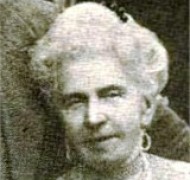
1843-1934
Cornelia Gray Lunt
Cornelia Gray Lunt was the daughter of Orrington Lunt, a founder of Northwestern University. She was a member of Northwestern’s Board of Trustees and served as the first President of the (Northwestern) University Guild, an organization comprised of community and university women who were concerned with promoting the arts. Despite resigning from the Board in 1920, she continued to host university events at her home, earning her the nickname the “First Lady of Evanston”.

1848-1932
Frances Macbeth Glessner
A talented painter, silversmith, wood carver, and jewelry maker, Frances Macbeth Glessner was an early and prominent member of the Society of Decorative Art, formed in Chicago in 1877. In 1904, she began taking lessons in metal work from Madeline Yale Wynne, a distinguished metal worker and important proponent of the Arts and Crafts movement. Her pieces featured simple lines and often visible hammer marks, making them excellent examples of Arts and Crafts metal work. Many of her pieces are currently on display in several different museums.
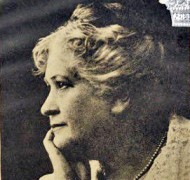
1850-1934
Alice Virginia French
Alice French, who wrote under the pen name of Octave Thanet, became the first writer from Iowa with a national reputation. She published stories and articles in national periodicals such as the Atlantic Monthly, Harper’s, Scribner’s Magazine and Century Magazine. She also wrote popular novels based on life in a fictional Midwestern town along the Mississippi River, as well as stories based on the life and culture in Lawrence County, Arkansas, where she owned a winter home, Thanford. Her specialty was local color, dialect, and accurate depiction of the customs and physical settings, flavored with romantic ideals and moral uplift. The Man of the Hour, published in 1905, was her most popular novel. Alice developed other talents as well and had a woodworking shop in Thanford where built shelves and simple furniture. She also had a darkroom where she developed and printed photographs with chemicals she mixed herself.
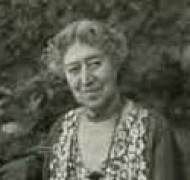
1850-1937
Florence Griswold
Florence Griswold’s residence in Old Lyme, Connecticut became the center of the Old Lyme Art Colony, at its time the most famous art colony in the country and the first to adopt impressionism. After being orphaned at a young age, Griswold and her sister opened their home up to boarders, where she met artist Henry Ward Ranger, who in turn introduced her to other artists. Soon her home became a thriving center for artists, with future First Lady Ellen Axson Wilson visiting for a period. After Griswold’s death, her home became the Florence Griswold Museum, exhibiting both art and historical material. It was declared a National Historic Landmark in 1933. The Old Lyme Art Colony remains a thriving art community today.
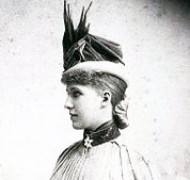
1863-1945
Amelie Rives Troubetzkoy
Amelie Rives Troubetzkoy wrote at least 24 volumes of fiction, numerous poems, and Herod and Marianne, a verse drama. Her most famous work was The Quick or the Dead?, published in 1888, and her 1914 novel, World’s End, was reputed to be “the best seller in New York City.” She was also a Broadway playwright. Her play, The Fear Market, ran for 118 performances in 1916.
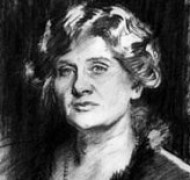
1864-1983
Elizabeth Sprague Coolidge
Elizabeth Sprague Coolidge was an American pianist and patron of music. Coolidge inherited a considerable amount of money after the deaths of her husband and parents, which she used to promote chamber music. She managed to raise the status of chamber music in the country, where the major interest of composers had previously been in orchestral music. Coolidge also started the Berkshire Music Festival, which grew into the Berkshire Symphonic Festival, a festival still held every year.
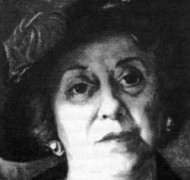
1879-1969
Inglis Fletcher
Inglis Fletcher was an author best known for her Carolina Series, twelve novels that spanned 200 years of North Carolina history. The first novel, Raleigh’s Eden, was published in 1942. Books in the Carolina Series have been translated into seven different languages and have sold millions of copies. Fletcher also helped establish the first North Carolina Writers Conference in 1950. She was awarded an honorary degree by the Women’s College of the University of North Carolina, and received the first North Carolina Award for Literature in 1964.

1888-1958
Antoinette Quinby Scudder
In 1934, Antoinette Quinby Scudder purchased a New Jersey paper mill from the Diamond Paper Mill Company in that she later turned into the Paper Mill Playhouse. While initially producing plays, the decision was made in 1940 to fill a gap in the summer schedule with a musical. The move was met with great enthusiasm and the playhouse thrived until her death. Scudder was also a playwright, and in 1930 won a prize for the best play written by a woman.
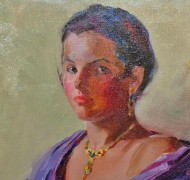
1881-1981
Iris Marie (Andrews) Miller
An important Detroit portrait painter of the 1920s–1950s, Iris Marie (Andrews) Miller studied in Philadelphia at the Pennsylvania Academy of Fine Arts (1899-1901) under Hugh Breckenridge, William Merritt Chase and Hugh Grafly. On Chase’s advice, she moved to Topeka, KS for two years and created the city’s first technical high school Fine Arts Department. After moving to Detroit with her husband, Iris participated in the city’s art scene; entering the Annual Michigan Artists Exhibition for 46 years straight and winning many of its prizes including the coveted Scarab Club Gold Metal in 1929. She created large Liberty Bond drawings for the Detroit Free Press and had her drawings published in magazines such as The Century. In addition to personal painting interests and numerous portrait commissions from major local organizations and important families, she also joined various civic organizations and women’s clubs. In 1926, she was appointed to the Advisory Committee for the Art School of the Detroit Society of Arts and Crafts (now College for Creative Studies). From 1930-1933, she served as Chair (and exhibit planner) for the Art Gallery of the Colony Club, a downtown Detroit Women’s service and social organization. In 1932, she was asked to be on the Advisory Committee for the People’s Museum Association, Detroit Institute of Arts and in 1945 on the Board of Sponsors for the Institute’s exhibit, Living American Art. Her affiliations included the National Association of Women Painters and Sculptors, National Arts Club, Detroit Society of Arts and Crafts and Detroit Society of Women Painters and Sculptors.
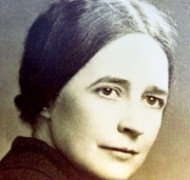
1891-1988
Mary Chevillette Simms Oliphant
In 1916, the South Carolina state superintendent of education asked Mary Oliphant to update the 1860 history of South Carolina, written by her grandfather, for use as a junior high school textbook. The updated edition was adopted by the state Board of Education in 1917. Oliphant wrote her own South Carolina history textbook in 1932, which would go on to have nine editions. She also succeeded in having her ancestral home, Woodlands, designated a National Landmark in 1971. Oliphant was the first woman to receive the Order of the Palmetto, an award given by the Governor of South Carolina to those who made contributions of statewide significance.
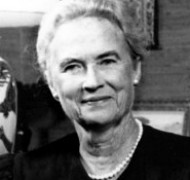
1918-2013
Mary Simmons Oliphant Furman
Mary Oliphant Furman and her mother, Mary Simms Oliphant, were co-authors of several editions of The History of South Carolina and South Carolina: From the Mountains to the Sea, textbooks used by generations of students. She was also influential in developing Greenville’s first arts festival and worked on a number of restoration projects. With her husband, a member of Furman University’s founding family, she contributed much towards the betterment of the school and the community.
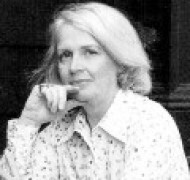
1929-2011
Elizabeth (Sherry) Crownhart-Vaughan
Sherry Crownhart-Vaughan was a historian, author, civic activist, and the first woman appointed to the boards of directors of Nordstorm and First Interstate Bank. Along with her husband, Sherry spent over 40 years in research and writing in the fields of the Pacific Northwest, Pacific Rim, and Russian history, and served as director of the North Pacific Studies Center. Due to her research, she and her husband visited the Soviet Union over a dozen times and were warmly received by Russian scholars and diplomats, despite the Cold War tensions between the United States and the Soviet Union.

1941-
Virginia Bath Terry
Virginia Bath Terry helped to transform a small mining town in the mountains of Nevada into a tourist destination. She was involved in the cultural and artistic development of the town. Virginia brought in artists to help create murals, merging the old mining world with the new. She also helped put together a village and has written a book. Virginia’s help transforming this small town has brought in people from all over the country.
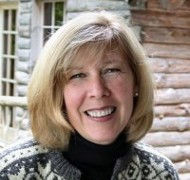
1949-
Jan Brett
With over 41 million books in print, Jan Brett has touched the lives and helped shape the imaginations of millions of children since the 1980’s. Her prolific career includes over 35 titles including The Mitten, The Hat, and Gingerbread Baby.
Jan was born in Massachusetts in 1949 and still lives in a seacoast town near where she grew up. As a child, she took an interest in illustration and developed a fascination with the worlds that could be created in picture books. “I try to recreate that feeling of believing that the imaginary place I’m drawing really exists. The detail in my work helps to convince me, and I hope others as well, that such places might be real.”
To gather those details, Jan travels extensively to research new regions and environments to inspire her work. Every trip is the potential starting point for a new book. In an interview with National Geographic Magazine she noted that, “travel is like a treasure hunt. I go with a list of things to find… One time I did a book about reindeer, and I had to go find out what the bottom of their hooves look like because I wanted to show that in an illustration. Another time it was tree bark; another time, badgers—whatever the story requires. It’s always a treasure hunt.”
Jan lives with her husband, who is a member of the Boston Symphony Orchestra, and Buffy, her pet hedgehog. She is a member of our Massachusetts Society.

1955-
Caroline Rennolds Milbank
Caroline Rennolds Milbank is one of America’s premier fashion historians who has been a costume curator for exhibitions at the Museum at the Fashion Institute of Technology, The Metropolitan Museum of Art and the Clark Art Institute. She is the also the author of four books: Couture: The Great Designers, The Couture Accessory, Resort Fashion, and FASHION: A Timeline in Photographs.

1970-
Emily Jenkins Followill
Emily Jenkins Followill is an established photographer who has been recognized in nationally and internationally known publications including Veranda, Better Homes and Gardens, Traditional Home, Atlanta Homes and Lifestyles, Southern Living, and many more. She began her career as a studio manager and digital photographer for a national production agency producing everything from nationally recognized jewelry advertisements to multi-room sets for product catalogs. In 2001 she opened her own company and has become the digital photographer of choice for interior designers, residential architects and landscape architects for websites and published books.
- Providing Care for Others

1839-1917
Dr. Elizabeth Ann Follansbee
After stints at the University of California and the University of Michigan Medical School, Dr. Elizabeth Follansbee graduated from the Women’s Medical College of Philadelphia in 1877. She returned to California where she and two other female physicians founded the Children’s Hospital of San Francisco, one of nine hospitals founded by women and the only one on the West Coast. She eventually moved to Los Angeles where she became the first female member of the Los Angeles Medical Association and was appointed to teach pediatrics at the University of Southern California’s new medical school. Dr. Follansbee arranged for female USC graduates to intern at Children’s Hospital of San Francisco, the only hospital on the West Coast that accepted female interns and residents.
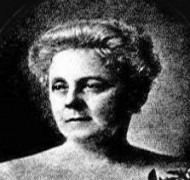
1846-1909
Marie Antoinette Quinby
Mary Antoinette Quinby was an active worker in cause of the Relief Association and outfitting of the hospital ship Solace during the Spanish American War. She also spent days and nights at the railway stations assisting the sick returning soldiers. Miss Quinby was founder and president of the Women’s Branch of the New Jersey Historical Society and served as president of Section 11 of the Army-Navy Relief Society. She had the distinction of being appointed by the state of New Jersey to represent the state in the interest of women at the World’s Fair at Chicago in 1982.
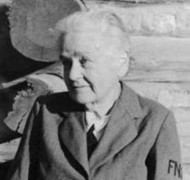
1881-1965
Mary Carson Breckinridge
Mary Carson Breckinridge was born into a prominent political family in 1881 – her grandfather was Vice President John C Breckinridge and her father was an Arkansas Congressman and US Minister to Russia – and was educated by private tutor in Washington, DC, Switzerland and Russia. Given that upbringing, it might come as a surprise that Mary’s life calling and passion was ensuring that women in rural America had adequate access to healthcare. This passion led her to found the Frontier Nursing Service, which provides healthcare services to rural, underserved populations and educates nurse-midwives. … At the age of 25, Mary became a widow when her husband of only two years died suddenly. Finding herself alone, she entered nursing classes at St. Luke’s Hospital in New York City in 1907 (much against her mother’s wishes) and three years later received a degree in nursing.
She soon remarried, settled in Eureka Springs, Arkansas and had two children. Her daughter Polly however, was born prematurely in 1916 and did not survive. Two-years later her four-year old son Clifford died of appendicitis. Two-years after that, she and her husband divorced.
Alone once more, Mary again turned to nursing. She joined the American Committee for Devastated France, traveling to Europe and coordinating efforts for child hygiene and nursing services. It was here that she observed how the organizational structure of remote outpost healthcare through France could be mirrored to meet the healthcare needs of America’s rural women and babies.
At the time, there were no midwifery courses offered in the United States, so Mary traveled to England for training to become a certified midwife. In 1925 she returned to America, with two other midwives she’d met in London, and founded an organization in Hyden, Kentucky that soon became the Frontier Nursing Service.
These three midwives would travel by horseback, in all manner of weather, to deliver babies and provide health services to rural populations. They also conducted some of the earliest surveys to collect statistics on infant and maternal mortality rates in rural areas. In 1930, Mary’s work and advocacy lead to the formation of the Kentucky State Association of Midwives and nine years later she opened her own midwifery school in Wendover, Kentucky.
Mary led the Frontier Nursing Services until her death in 1965, was inducted into the National Women’s Hall of Fame in 1995, and was a member of our Arkansas Society.

1888-1981
Mary Louise Marshall
In 1910, Louise Marshall founded The Cabbage Patch Settlement House with the help of her community, church, and family. It was created as a safe haven for children in the neighborhood. Though not educated in social work, Marshall took an active role in the day-to-day management of The Patch and focused particular attention on children in whom she saw real potential. She used her connections to do major fundraising, both to buy property and buildings, and to support the growth and expansion of the house. Marshall was active in The Patch until her death, and it continues to operate today around the corner from its founding location.
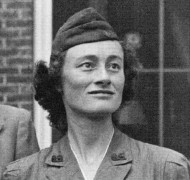
1893-1972
Alice Miller Chester
Alice was known internationally for her work with the Girl Scouts; her involvement spanning half a century. She was a fierce champion of providing opportunities for young girls and empowering them to experience the outdoors.
She was “loved for her leadership, generosity, her many kindnesses, her loyalty, her hospitality, and most of all for her friendship.”
Born in 1893, Alice attended Bryn Mawr College before traveling to France during WWI to serve as an ambulance driver for the American Red Cross during the shelling of Paris. When she returned to the United States in 1919, a friend thought she might take an interest in the Girl Scouts, an organization founded in Georgia just seven years earlier that was designed to help girls develop new skills and confidence.
Alice took the idea and never looked back! It was the beginning of 50 years of leadership within the Girl Scouts organization.
In 1921 she became the first President of the Girl Scouts of Milwaukee and in subsequent years served in various offices for the Scouts at the national and international level including Assistant World Treasurer, Chairman of the Girl Scout Center in Adelboden, Switzerland and Vice Chairman of the Juliette Low World Friendship Committee.
Alice also sought to develop an overnight camp and in 1924, after purchasing and donating a significant amount of land, Camp Alice Chester opened its doors on the shores of Booth Lake in East Troy, Wisconsin.
In the decades since, thousands of young girls have spent their summers at CAC (also known as Alice Chester Center) and the camp remains a beloved resource for the Girl Scouts.
Additional civic involvement included founding the Junior League of Milwaukee in 1915, holding offices in the League of Women Voters and the Women’s Club of Wisconsin, and serving on the board or as trustee for the Milwaukee Institute of Art & Design, Lawrence University and Milwaukee-Downer College.
Alice was civically active and an avid traveler until she was diagnosed with leukemia at the age of 77. She passed away two years later in 1972 and was a member of our Wisconsin Society.
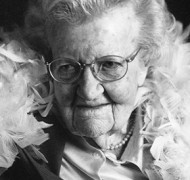
1903-2001
Frances Wilson Peabody
Frances “Frannie” Peabody, was a preservationist and community activist who became one of Maine’s leading figures in the fight against AIDS.
Born in Washington, DC in 1903, Frannie attended Smith College in Massachusetts before finding work at Macy’s in New York City. There she met her husband and the couple moved to Portland, Maine, ultimately raising five children.
In Portland Frannie took an interest in historic preservation and became an active member of the NSCDA-Maine. She focused on preserving the Tate House Museum; co-authoring a book about its history and serving as president of the Maine Society for a time.
In 1961 she helped found Greater Portland Landmarks, a non-profit dedicated to preserving the historic legacy of Maine’s capital city.
At the age of 81 in 1984, one of her grandsons passed away from AIDS. Frannie would dedicate the rest of her life – the next 18 years – to fighting HIV/AIDS and advocating for patients and their families.
Through this family tragedy she realized the lack of resources and information available about the disease. Rather than simply lamenting this fact, she helped establish the first AIDS information hotline in Maine 1985.
The following year she founded The AIDS Project (TAP), which would become Maine’s largest AIDS service organization. She worked tirelessly to educate people about HIV/AIDS and ran a weekly support group – never missing a meeting for 10 years.
In the mid-1990’s she co-founded the Peabody House (now the Frannie Peabody Center), the first and only living facility in Maine for people with advanced HIV. In 1990, she received the Daily Points of Light Award from President George H.W. Bush for outstanding volunteerism and in 2000 she won the National Leadership Award from the AIDS Action.
On July 16, 2001, just 10 days before her death and at the age of 98, she wore a pink feather boa while serving as Grand Marshall of the South Maine Gay Pride Parade.
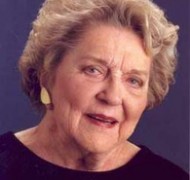
1917-
Anne Gould Hauberg
Anne Gould Hauberg is a Seattle civil activist, philanthropist, and patron of the arts. Her philanthropy began when two of her three children were proved to be mentally disabled. The Haubergs gave money for the creation of the Pilot School for Neurologically Impaired Children, which opened in 1960 on the University of Washington campus. The School continues today as the Experimental Education Unit (EEU). Hauberg was also involved in the Seattle Municipal Art Commission and was a founding member of the civic activist organization, the “Committee of 33”. In 2007, the University of Washington Libraries’ Artist Images Award was renamed the Anne Gould Hauberg Artist Images Award.

1922-2017
Helen (Penny) Bates Chenery
Helen (Penny) Chenery’s transition from suburban housewife to one of the most notable and celebrated women in Thoroughbred horse racing was about as unexpected as the meteoric rise of her colt Secretariat, the 1973 winner of the Triple Crown.
Born in 1922, Penny began riding horses at the age of five. Her father was a New York utilities magnate who also owned a small racing stable in Virginia. After graduating from Smith College, she joined a naval architecture firm that aided in designing the Normandy landing craft and volunteered domestically and abroad with the American Red Cross.
Following the war, Penny enrolled at Columbia Business School as one of only 20 women in her class. She went on to marry a Columbia Law graduate, relocate to Colorado and raise four children.
Then in 1967, Penny’s father became ill. His small stable, Meadow Farm, had produced several Kentucky Derby contenders and it was his life’s dream to win the title. Penny took over management of the stable and poured herself into the business. In 1971 her two-year-old Riva Ridge swept the juvenile stakes and the following year won the Kentucky Derby – fulfilling her father’s dream in the final year of his life.
And then the 1973 season and Secretariat’s Triple Crown run unfolded in perhaps the most celebrated performance in the history of the sport. Secretariat and Penny became instant stars.
Penny established herself as a champion of Thoroughbreds and women in business and sports. She was one of the first women admitted as a member of The Jockey Club, served as president of the Thoroughbred Owners and Breeders Association from 1976-1984, helped found the Thoroughbred Retirement Foundation (an organization dedicated to saving Thoroughbred horses no longer able to compete), and created the Secretariat Vox Populi Award annually honoring racing’s most popular horse.
In 2006, she received the Eclipse Award of Merit for a lifetime of outstanding contributions to the Thoroughbred industry and is affectionately referred to as the First Lady of Racing.
Penny passed away in September 2017 at the age of 95 and was a member of our New York Society.
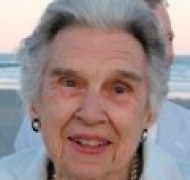
1922-2012
Josephine Clapp Osbun
Josephine Clapp Osbun worked at the Carter Memorial Laboratory in Savannah GA as a 2nd Lieutenant (U.S. Army) during World War II. Osbun worked specifically in the U.S. Public Health Service researching mosquito control in order to save soldiers from malaria and other tropical diseases. Also an accomplished equestrian, Osbun chaired numerous committees and charitable organizations.
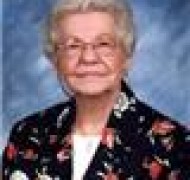
1923-2014
Mabel Bedsole Ward
Mabel Bedsole Ward was a valuable community volunteer. She was a member of the Junior League and established the Mobile Arts Council while serving as its president. She also volunteered in various other capacities which prepared her to become the director of The J.L. Bedsole Foundation. Not only was she instrumental in the awarding of grants to local organizations but under her directorship, the Bedsole Scholars program was developed to serve students in Southwest Alabama with need based scholarships. Bedsole Scholars attend Leadership work-shops and perform community services during their college years. There are now over 500 graduates of this program and many are still in the Mobile area becoming mentors to younger students as well as serving in leadership positions in their professional life and communities.
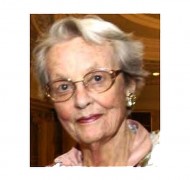
1924-2013
Henrietta (Tenny) Marshall
Henrietta (Tenny) Marshall was a dedicated leader and an outspoken advocate for women’s rights who spent the entirety of her adult life championing women’s equality and access to reproductive health care. She was also a force within our organization, serving on the boards of our Pennsylvania Society and of Sulgrave Manor, ancestral home to George Washington in Northhamptonshire, England.
Born in 1924 in Philadelphia, Tenny’s family strongly supported the advancement of women in society and her grandfather was a founding member of Planned Parenthood Southeastern Pennsylvania (PPSP) in 1929.
Once she completed her education, Tenny was determined to continue the family legacy and served on the Board of Directors of PPSP for over 30 years, acting as chairman in the early 1970’s. She served as the board chair of Planned Parenthood Federation of America from 1975-1978, and as the Acting President for a year during the search for a national leader.
She was the Executive Director of WOMEN’S WAY in Philadelphia, a nonprofit that empowers organizations and individuals to take action in support of equal opportunity for women, girls, and gender equality for all.
Tenny also served on the boards of the Guttmacher Institute, The Population Institute, The Marriage Council of Philadelphia, the International Planned Parenthood Federation/Western Hemisphere Region, Advocates for Youth, and The Shipley School.
In 1976, she was the recipient of The Human Rights Award from the city of Philadelphia. She lived until the age of 89, never wavering in her commitment to the advancement of women’s rights.
She passed away in 2013 and was a member of Pennsylvania Society, serving as President from 1984-1987.

1928-
Helene (Lenci) Loring
Lenci Loring was an active member of Therapeutic Riding of Tucson (TROT) for many years. TROT contributes positively to the cognitive, physical, emotional, and social well-being of people ages 5 and older with disabilities. Professional therapeutic riding instructors work with parents/caregivers, and riders to set appropriate goals for each rider. Throughout the world, there are thousands of individuals with special needs who experience the rewarding benefits of horseback riding. Because horseback riding rhythmically moves the rider’s body in a manner similar to a human gait, riders with physical disabilities often show improvement in flexibility, balance, and muscle strength. The deaf and blind also benefit from this program.
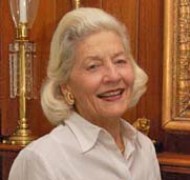
1930-
Betsy Ross Lovett
A native of Jacksonville, Florida, Betsy Ross Lovett founded the Betsy Lovett Arts Center, Betsy Lovett Surgery Center at St. Vincent’s Medical Center, Betsy Lovett Courtyard at the Jacksonville Library, and received Cultural Council of Greater Jacksonville Individual Hall of Fame Award in 2010.

1931-2015
Eleanor Johnson Ashby
Eleanor Ashby served as the Executive Director and Founder of Leadership Jacksonville, which trains hundreds of Jacksonville adults and youth leaders. She also was involved with Jacksonville Community Council, Women’s Giving Alliance, and was President of the PACE Center for Girls (President). Eleanor also served on the boards of Jacksonville Symphony Orchestra, Planned Parenthood of NE Florida, and the University of Florida Advisory Council. She received the HandsOn Jacksonville Bernard V. Gregory Award in 2013 for lifetime leadership service which recognizes those who have changed lives and was the recipient of OneJax Humanitarian Award in 2014.

1933-
Alice Lea Mast Tasman
Alice Lea Tasman’s contributions to the philanthropic, medical, and cultural communities in Philadelphia are remarkable. Mrs. Tasman has dedicated much of her career to ophthalmology organizations. She has been a Development Consultant for Wills Eye Hospital, served as President of the Women’s Board of Wills Eye Hospital, and coordinated the Wills Eye Balls for many years. She has served as the Chairman of Form in Art, a program from the Philadelphia Museum of Art for adults who are visually impaired and show their works of art at Wills Eye. She was the founder and chair of the Orbital Gala, a major fundraising event for the Foundation of the American Academy of Ophthalmology (FAAO). Mrs. Tasman also assisted fundraising efforts in the Philadelphia area for Project Orbis, a non-profit flying eye hospital staffed by volunteer surgeons and designed for teaching modern eye care in developing nations. She is also the founder and past president of the Chestnut Hill Historical Society, and has served on the Historical Society of Pennsylvania’s Board of Councilors. She also serves on the Women’s Board of Thomas Jefferson University Hospital and the Chestnut Hill Community Center. Mrs. Tasman was named a Distinguished Daughter of Pennsylvania by Governor Tom Ridge.
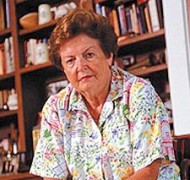
1934-2014
Cecilia Swann Seiler
Cecelia Swann Seiler was the owner of the University of Georgia mascot for over 50 years. She and her husband received a white bulldog puppy as a wedding gift in 1956 and brought him to his first football game later that fall. Due to the puppy’s popularity, he was renamed Uga I and made the official mascot of the football team. While her husband was the one to escort Uga and his descendants to games and university events, it was Cecelia who provided the day-to-day care of the dogs and was the driving force behind the Uga tradition.
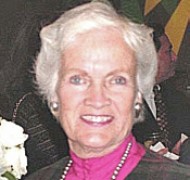
1934-
Sally Hopper
Sally was elected in 1986 to serve as a Republican Precinct Chairman for seven counties in Colorado: Pitkin, Eagle, Summit, Clear Creek, Gilpin and the mountainous portions of Boulder and Jefferson Counties. In the middle of campaigning, Sally’s husband of 29 years died after a short illness, just three months before the election. “He didn’t want me to drop out, and being elected to serve a large district proved to be a valuable diversion,” she said. When elected, she was one of just five women in the thirty-five-member Senate body. Sally served three terms in the State Senate (1987-1999), retiring due to term limits. Among her accomplishments, she was Chairman of the committee on Health, Environment, Welfare and Institutions and she was a member (and Chairman for a time) of the Criminal Justice Commission – formed following the 1993 “Summer of Violence”. Among other legislation carried, she was the Senate sponsor of the Child Health Plan, which provides insurance coverage for children of working parents who do not qualify for employer-provided health insurance or Medicaid. Since retirement she has served on more than a dozen boards, including the George W. Hopper Family Foundation, formed by Sally and her four daughters to support programs serving middle school age girls. Her devotion to historic preservation and her community can be seen through her volunteerism for the historic Hotel de Paris in Georgetown, Colorado and her participation on their Board.
- Women Succeeding Within Their Roles
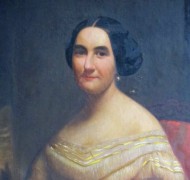
1826-1905
Elizabeth Jarvis Colt
Elizabeth Colt was the widow and heir of firearms manufacturer Samuel Colt, founder of Colt’s Manufacturing Company. Following her husband’s death in 1862, she inherited a controlling interest in the company and played a significant role in rebuilding the main armory following a devastating fire. Along with her brother, who became president in 1865, Colt worked to bring the company into the 20th century. Known as “The First Lady of Hartford”, she helped found and preside over numerous organizations.
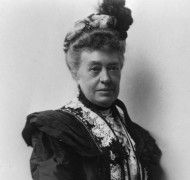
1828-1905
Jane Lathrop Stanford
Though her untimely death is shrouded in mystery, in life Jane Lathrop Stanford was the epitome of a Founding Mother – a mother herself and the co-founder of Stanford University.
Born in Albany, NY in 1828, Jane married Leland Stanford at the age of 22. After moving to California in 1865 Leland became an early investor in the Central Pacific Railway amassing a small fortune. He also served as Governor of California for a year and as a California Senator for nearly a decade.
The couple tried to have a family for 18 years before they finally welcomed a son, Leland Jr. In a cruel twist of fate however, the younger Leland contracted typhoid while on holiday in Italy and died just shy of his 16th birthday. In the wake of this family tragedy the couple declared that “the children of California shall be our children.” And with that, they founded Stanford University in 1891.
Two years later, Leland Sr. died and joined his son in the family mausoleum on the Stanford Campus. This left Jane to take the helm of operations and management of the university. She advocated for the admission of women, promoted academic freedom and the arts, and directed the Board of Trustees to sell her personal jewels upon her death to establish an endowment for the purchase of books and publications.
Jane died in 1905 of a mysterious poisoning though a culprit was never caught. Her suspected murder remains unsolved but the legacy she built at Stanford University endures. Jane was an early member of our California Society.
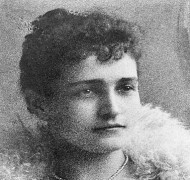
1859-1930
Mary Scott Harrison McKee
Mary Scott Harrison McKee was the only daughter of President Benjamin Harrison and his wife, Caroline Scott Harrison. She and her sister-in-law, Mrs. Russell B. Harrison, inspired the first dance in the White House, which met with a storm of criticism from across the United States and was characterized in the press as “too undignified a proceeding to be permitted within the historic mansion.” When her mother fell ill, Mrs. McKee served as hostess of the White House and continued in that role after her mother’s death in 1892. As hostess, Mrs. McKee attended official ceremonies and functions of State either along with or in place of her father. She was described as a brilliant conversationalist and a beautiful dancer who had a keen sense of humor and inherited her father’s skill in telling a story.
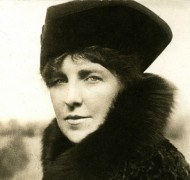
1867-1946
Theodate Pope Riddle
Theodate Pope Riddle was the first woman to become a licensed architect in both Connecticut and New York, and was also a survivor of the Lusitania sinking. She designed Hill-Stead, the family estate and museum, as well as the Avon Old Farms and Westover School. Riddle was appointed a Fellow of the American Institute of Architects in 1926. She is best known for the 1920 reconstruction of the New York City birthplace of President Theodore Roosevelt, which was recognized in 2014 by Built by Women New York City as an outstanding and diverse site.
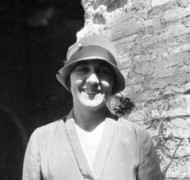
1887-1976
Elizabeth Lord
Elizabeth Lord and Edith Schryver formed Lord & Schryver in 1929, the first firm of female landscape architects in the Pacific Northwest. The women designed over 250 gardens, including those at Reed College, the Hoover-Minthorn House, and Gaiety Hollow, the women’s personal residence. Lord also served on the Salem Parks Board, the Capitol Planning Commission, and the Street Tree Commission.
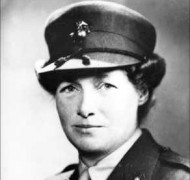
1895-1990
Ruth Cheney Streeter
Born in 1895, it’s doubtful that Ruth Streeter could have possibly predicted the course her life would take. She graduated from Bryn Mawr College in 1918, married, had four children, and took an interest in civic affairs, becoming the first female president of her local Welfare Board in New Jersey.
And then WWII broke out. At age 47, Streeter felt compelled to serve and earned her commercial pilots license with the intention of joining the Women Airforce Service Pilots (WASPS). However, due to her age, WASPS rejected her multiple times.
Undeterred, Streeter looked elsewhere and in 1943 she was appointed the first director of the United States Marine Corps Women’s Reserve (USMCWR) and became the first woman to attain the rank of Major in the U.S. Marine Corps. Within a year she was promoted to a full Colonel. Under her tenure, the USMCWR grew to over 800 officers and nearly 18,000 enlisted.
She was awarded the Legion of Merit for outstanding service, the American Campaign Metal and the World War II Victory Metal before resigning her commission in 1954. Ruth Streeter passed away in September of 1990 at the age of 94.
We have so much admiration for Street’s tenacity and commitment to service and are proud to also call her a former National President of the NSCDA, a role that she dutifully filled from 1948-1952.

1903-1993
Anne Bruce Haldeman
Anne Bruce Haldeman was one of the earliest and most pre-eminent female landscape architects in Kentucky. While Haldeman designed numerous gardens and landscapes, she is best remembered for her role in the historically-informed gardens at My Old Kentucky Home State Park, Farmington Historic Plantation, and as a consultant for Shaker Village. She helped found the Historic Homes Foundation, Inc., a local organization created to protect the integrity of historic homes. In 1973, Haldeman was awarded the Mrs. Oakleigh Thorne Medal for outstanding achievement in Garden Design from the Garden Club of America.
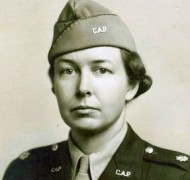
1912-2009
Louisa Spruance Morse
During World War II, Louisa Spruance Morse studied to become an aviation ground instructor and became certified by the Civil Aeronautics Authority. She enlisted in the Civil Air Patrol (CAP) as a private in 1942 and began teaching navigation, meteorology, and civil air regulations. In 1953, she was appointed Delaware Wing commander, was named Wing Commander of the Year for 1969, and was appointed to the National Executive Committee in 1976. Morse continued to be involved in CAP through financial contributions and served as national historian. She was inducted into the Delaware Aviation Hall of Fame in 2003.
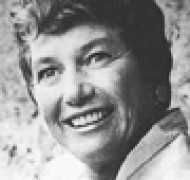
1922-2014
Margaret (Cobey) Beall Black
Cobey Black was one of Honolulu’s most popular and most prolific newspaper columnists for many years. Gifted with a keen intellect and insatiable curiosity, Cobey captivated readers of the Honolulu Star-Bulletin and the Honolulu Advertiser with over 1000 smartly written glimpses of the day’s most popular and accomplished entertainers, intellectuals and politicians. She started her career in Washington, D.C., working as the women’s editor at the Washington Daily News until her husband was reassigned to Hawaii. In 1954, Cobey saw Hawaii on the cusp of historic change; statehood was on the near horizon and she recognized Hawaii as a site of rare cultural, historic and social intersection. After taking graduate courses at the University of Hawaii she co-authored two books on Hawaiians: “Princess Pauahi Bishop and her Legacy” in 1962 and “Iolani Luahine” in 1986. She also wrote an authoritative book on the 1932 Massie case entitled “Hawaii Scandal” published when she was 79. Cobey was an active member of the community, serving in a number of different capacities for various organizations.
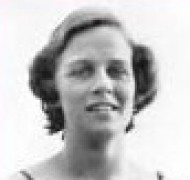
1924-2010
Elizabeth Prince Nufer Dixon
Prince Nufer Dixon is a former world record holder in the backstroke. As a young girl, Dixon began swimming in her community pool in North Carolina. During the 1930s and 1940s, she set several national records in backstroke, freestyle, and individual medley, but she never swam in the Olympics due to World War II. She was recognized by Sports Illustrated twice as “Best Woman Athlete by Birth State” and one of “The 50 Greatest North Carolina Sports Figures.”
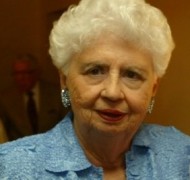
1925-
Camille Maxwell Elebash
In 1957, Camille Maxwell Elebash and her husband founded a Tuscaloosa newspaper called The Graphic. Elebash supported her husband, who served as the newspaper’s editor. In 1979, the couple sold the newspaper to The Tuscaloosa News. Elebash went on to become a University of Alabama associate professor of advertising and public relations, and taught for 16 years. She was honored with the Distinguished Alumna Award in 2014.
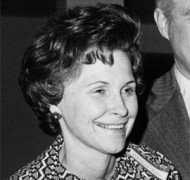
1925-2015
Adelaide Wallace Ponder
In 1957, Adelaide Wallace Ponder and her husband purchased The Madisonian, one of the oldest newspapers in the South. Under her leadership, The Madisonian won numerous awards from the Georgia Press Association and became one of the Southern region’s most respected weeklies. Ponder helped pave the way for female editors and received statewide recognition for her work. In 1993, she was honored as a community cultural leader by Governor Zell Miller, and received the Governor’s Award for her volunteer efforts to preserve the historic character of her native Madison.

1929-
Elizabeth Early Chilton
Elizabeth Early Chilton is President and Publisher of West Virginia’s largest-circulation newspaper, The Charleston Gazette, which has won many national awards due to its reporting on educational, health care, and environmental issues. Elizabeth began working at The Gazette in 1952 upon her marriage to its publisher, Ned Chilton. After her husband’s death in 1987, she served as vice-president and treasurer of the Daily Gazette Company when she became the director of Charleston Newspapers, a 300-employee operation, in 1991. Elizabeth is active in higher education. She serves on the advisory board of the WVU Eberly College of Arts and Sciences, is a trustee of the University of Charleston, served on the Marshall University Yeager Scholars Selection Committee, and was a member of the West Virginia State College Foundation. In 1999 she was appointed to the WVU Board of Advisors and received the President’s Distinguished Service Award in 2000. Elizabeth also serves on a number of different community and foundation boards and is the current chairman of the West Virginia Governor’s Mansion Preservation Foundation.

1943-
Ann Frierson
Ann Frierson served as National President of the Garden Clubs of America from 2001-2003 and was in charge of the GCA Centennial 2013 Centennial. She has served on the Board of Advisors to the State Botanical Garden of Georgia from 1989 to the present. Ann has served on the Dean’s Advisory Council for the College of Environment and Design at the University of Georgia since inception in 2010. She is presently on the board of the Center for Plant Conservation in St. Louis.
- Wearers of Many Hats
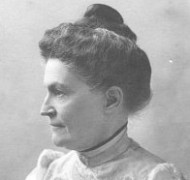
1835-1917
Eleanor Kinzie Gordon
An established author, Eleanor Kinzie Gordon wrote The Chicago Massacre, which shares the experiences of her father, a government agent who worked on the western frontier; and Rosemary and Rue, a book of reflection in response to the death of her daughter. Gordon helped establish a hospital in Miami for soldiers returning from the Spanish-American War. Because of this, she was known across the country as the “Angel of the Boys in Blue.” Gordon was also the mother of Juliette Gordon Low, the founder of the Girl Scouts of America.

1860-1946
Mary Stanahan Pattison
Mary Stanahan Hart Pattison has been a signer, artist, author, editor, lecturer, clubwoman, educator, dietitian, organizer, politician and cook. She founded the Borough Improvement League, was instrumental in establishing the public library and the Metuchen, New Jersey modern High School. She believed that improvement of home conditions was the secret of community uplift, and her work was undertaken because of its bearing on the home problem. She was an active community member, severing in a wide array of organizations such as the New Jersey Federation, the American Mountain Laurel League, the New Jersey State Federation of Women’s Club, and many more. Ardent in women’s suffrage work, Pattison was elected Vice President of the New Jersey Woman’s National Party to push the Anthony Federal Amendment in Congress. Additionally, she wrote a book, “Principles of Domestic Engineering,” which was the first book to be published on this phase of the subject and one that standardized a new profession for women.

1861-1937
Dr. Grace Raymond Hebard
“A record of her life is an inspiring one. It is a record of persistent work…She was a pioneer in a pioneer state. She was an active and efficient worker in the case of women’s suffrage. She was a pioneer in discovering and preserving the early history of this region…Her service to Wyoming has been great.” – President A.C. Crane, University of Wyoming, 1936
Grace Raymond Hebard was born in Clinton, Iowa in 1861. While she was largely home-schooled, education would become the cornerstone of her life and career.
As the only woman in her engineering courses at the University of Iowa, she received constant criticism from her classmates. Nevertheless, she graduated in 1882 and took a job working for the US Surveyor General’s office which was mapping the Wyoming Territory.
While working, she earned her Master’s degree and then started a new job at the State Engineer’s Office as Deputy Engineer.
In 1891, Grace was appointed to the Board of Trustees at the brand-new University of Wyoming – she would work there for the next 45 years.
Grace quickly garnered power on the Board, taking the role of secretary while completing courses for her Ph.D. In 1898, she was considered for the role of President of the University, but declined, instead taking the bar exam and becoming the first woman admitted to the Wyoming State Bar.
In 1906, she was appointed associate professor of political economy and took a keen interest in frontier history, especially the contributions of women to the settlement of the western territories. She authored numerous books and became an authority on the history of Wyoming.
A lifelong suffragette, a colleague spoke of Grace’s activism during her memorial service, “What I wish to specialize on today is the important part Dr. Hebard took in having the State of Wyoming ratify the 19th Amendment.
Dr. Carrie Chapman Catt [and a group of suffragists] traveled to the western states and Dr. Hebard invited them to Laramie to meet with women from all over Wyoming… The 19th Amendment, while it had been passed by the Senate and the House, was required to be ratified by thirty-six of the states.
The women of Wyoming endorsed Dr. Catt and Dr. Hebard in their efforts, and advised them to appear in person before Governor Robert D. Carey. This they did. The Governor was moved by their earnestness, and called an extra session of the Wyoming Legislature, which ratified the amendment.”
That was January 27, 1920. By August of that year, thirty-six states had ratified the amendment, officially giving women the right to vote.
Later in life, Grace involved herself in helping to establish child labor laws and worked to erect scores of monuments marking the route of the Oregon Trail through Wyoming. She was a revered figure in the state, the Laramie Republic writing in 1918, “She is the woman above all others whom the people of Wyoming will listen to and her influence counts for much.”
She worked at the University until her death in 1937 and was a member of our Wyoming Society.
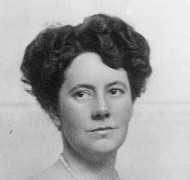
1876-1948
Isabel Anderson
Isabel Anderson was a philanthropist, humanitarian, author, and art collector. During World War I, she worked for the American Red Cross as a volunteer and spent eight months in France and Belgium caring for the sick and wounded. Upon returning to Washington, D.C., Anderson put her uniform back on to help those who were stricken with the Spanish Flu. Anderson also wrote more than 40 books –mostly children’s stories and travelogues. She was an equal partner with her husband in assembling their art collection and entertaining diplomats and military and government officials. Her legacy to the public includes a park and two museums, the Larz Anderson Auto Museum and Anderson House. The latter was given to the Society of the Cincinnati to use as its headquarters, an organization her husband was a member of, upon her death.

1890-1984
Amelia Peabody
Amelia Peabody was a woman who wore many different hats during her long life. A notable sculptor, who had her work exhibited in several different Boston museums, Peabody also had a love of science and land conservation. She combined the latter two to fund one of the world’s first solar energy projects in 1948. In 1974, she established the Amelia Peabody Charitable Fund, which continues to further her lifelong interest in health, visual arts, land conservation and historic preservation in New England.
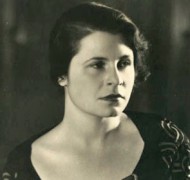
1909-1997
Eleanor Blake Kirkpatrick
During World War II, Eleanor became an active volunteer for many civic organizations, including the American Red Cross, and served as Chair of the Home Service Committee. In 1943, she participated in a radio recruiting program for the Women’s Army Air Corps and served on the Bureau of Navy Personnel as Chair of the Department of Prisoners of War. After the war, she and her husband founded the Kirkpatrick & Bale Oil Co (later to become the Kirkpatrick Oil Co), an oil exploration firm, where she served as a partner, vice-president, and secretary. In 1955, they founded the Kirkpatrick Foundation, which provided funding for the building of the Oklahoma Science and Art Center, where she served as an officer and trustee. At the Oklahoma City University, the foundation also provided funds for the Kirkpatrick Planetarium and the Kirkpatrick Fine Arts Auditorium. The Oklahoma City Community Foundation was also a product of their generosity and commitment to the community. She has been recognized and honored by numerous organizations for her work within the Oklahoma City community, and was inducted into the Oklahoma Hall of Fame in 1975.

1909-1999
Amalie Fair Robinson
Amalie Fair Robinson was a prominent resident of Jackson, Mississippi. She was elected president of the Jackson Junior Auxiliary and when the auxiliary met the standards of a league, she became the first president of the Junior League of Jackson. The Amalie Fair Robinson Awards are presented annually to Jackson League members who have contributed outstanding service to the League during the year. Amalie received the prestigious Chi Omega Volunteer of the Year Award for outstanding work as a volunteer for numerous organizations, including the USO during World War II, when she set up and directed the service men’s lounge at the Illinois Central railroad station; the Civil Defense program and the Red Cross Fund, for both of which she served as Women’s Division chair; and the American Legion Auxiliary for which she directed Mississippi Girls State. She served as a board member for many other civic organizations, among them the Jackson Community Hospital, the Hough Home for Girls, and the Hinds County Cancer Society. Amalie was chair of the first annual Pops concert in Jackson sponsored in 1955 by the Jackson Symphony League. She served as president of the Official Mississippi Women’s Club, Goodwill Auxiliary, Jackson Symphony League, and the Women of the Church of St. Andrew’s Episcopal Cathedral. Mrs. Robinson was strongly committed to historic preservation in the state and was the first woman to serve on the Board of Trustees of the Mississippi Department of Archives and History, where she took an active lead in the Governor’s Mansion Committee which oversees the care and maintenance of the Mansion. She retired from the Board in 1995 after twenty years of service. She also served as a member of the Board of Directors of the Mississippi Historical Society.
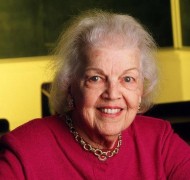
1917-1999
Marguerite Neel Williams
Marguerite Neel Williams was a tireless, lifetime supporter of history, historic preservation, and education in Georgia. Her advocacy for historic preservation ensured the survival of many landmarks throughout the state, and her civic activism created a safe space for the children of her hometown, Thomasville. She was instrumental in the restoration and preservation of the Thomasville Cultural Center, the Neel House, and All Saints Episcopal Church, and founded several groups dedicated to preservation. Throughout her life she provided leadership for civic, political, and educational organizations throughout Georgia. A lasting legacy of her philanthropy was the establishment, at her death, of the Marguerite Neel Williams Fund of the Williams Family Foundation of Georgia. Her legacy continues to positively impact the lives of Georgians.
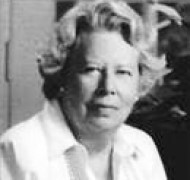
1918-2014
Elizabeth Craig Weaver Proctor
Elizabeth Craig Weaver Proctor was a prominent figure in Nashville. She was the first woman to be elected Mayor of the City of Belle Meade in 1982 and served two terms. Proctor also served on the Cancer Board of Vanderbilt Medical Center where she was named Volunteer of the Year. While on the Board of the Nashville Symphony, she started Concerts for Children, which brought in private and public schools to hear concerts twice a year at the War Memorial Auditorium. Proctor was also deeply involved in the Garden Club of Nashville and the Garden Club of America, and was presented the Amy Angell Collier Montague Medal for outstanding civic achievement.
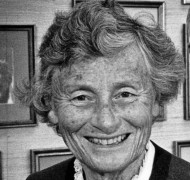
1919-2014
Marion Chester Read
There are few women who exemplify the spirit of “adventure” quite like Marion Chester Read; mountaineer, Himalayan explorer, pilot, endangered bat advocate, tennis and ski champion, philanthropist, matriarch.
Born in Milwaukee, Wisconsin in 1919, Marion showed an early aptitude for competition and a love of the outdoors. Being the oldest child and only daughter, she routinely beat her brothers in sports, especially tennis. While attending Bryn Mawr College, Marion’s athleticism thrived – she earned 20 varsity letters in four years in field hockey, softball, swimming, basketball, and tennis.
After graduating in 1941, Marion got a job with the Department of Defense to chart maps of the European theater during WWII and then became a mapmaker for Harvard’s geography department.
She married fellow adventurous-spirit Verne Read in 1949 and the couple climbed the Matterhorn for their honeymoon. This sparked an intense passion for mountaineering and they climbed Mount Blanc in France and lead three expeditions to the Himalayas. They were members of the first American expeditions to summit Manaslu in Nepal (the seventh highest mountain in the world) in 1978 and Mount Xixabangma in Tibet in 1982.
At age 55, Marion took an interest in flying and got her pilot’s license. In between expeditions she focused on philanthropic work serving on the boards of the Girl Scouts of Wisconsin Southeast (which her mother, Alice Chester, founded), Lawrence University, the Milwaukee Public Museum, and University School of Milwaukee (where 10 of her grandchildren attended classes).
At age 70, Marion won the world cross-country skiing championship for her age group in Finland. She competed in tennis tournaments and the Senior Olympics well into her 80s and at age 90, she was ranked second nationally among tennis players over age 80 by U.S. Tennis Magazine.
In 1982, she and Verne co-founded Bat Conservation International with then Milwaukee Public Museum curator, Merlin Tuttle, after discovering a large number of bats in a bedroom wall of their summer home on Oconomowoc Lake.
This discovery set the couple on a new course, traveling the world and camping in jungles (through their 70s and 80s) to net bats for conservation and study. This work also lead them to help establish the National Park of American Samoa and designate it as a protected land for endangered bats and the rain forest.
After 95 adventure-filled years, Marion passed away in 2014 at her home in Milwaukee overlooking Lake Michigan. She was a member of our Wisconsin Society.
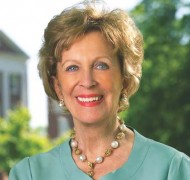
1936-
Martha Rivers Ingram
Martha Rivers Ingram serves as Chairman of the Board and CEO of Ingram Industries, Inc, which consists of diversified businesses in marine transportation, aggregate supply, book distribution, print on demand book manufacturing and digital storage, management and distribution services. She was named by Business Week as the 50th most generous person for donations between 2000 and 2004. In 2006 she was honored by the Community Foundation of Middle Tennessee as the recipient of the 13th Annual Joe Kraft Humanitarian Award for Philanthropic efforts and the Eli and Edythe Broad Award for Philanthropy in the Arts. She is the co-founder of the Schermerhorn Symphony Center in 2005, and has chaired the Nashville Symphony. She has also served on the Board of Trustees of Vanderbilt University.
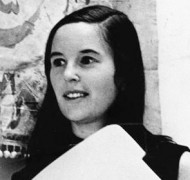
1938-2013
Katherine Daniels Kane
After a stint interning at the White House and CIA in the 1950s, Katharine Kane became a prominent figure in Boston during the 1960s and 1970s. After serving as a State Representative, she moved to Mayor Kevin White’s administration, working in the Office of Cultural Affairs. The success she achieved in this position made her Mayor White’s choice to head the U.S. bicentennial celebrations in 1976. She also was appointed Deputy Mayor in 1975, the first woman to hold the post. After leaving City Hall in the 1980s, she started a consulting firm, Katharine Kane, Inc., before returning to school to obtain a masters’ in divinity and a masters’ in theology.
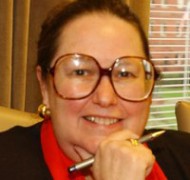
1951-
Elizabeth (Betsy) Johnson
Betsy Johnson is currently serving her third term in the Oregon State Senate. A licensed commercial pilot, in 1993 she was selected as Manager of the Aeronautics Division of the Oregon Department of Transportation. During the 1999 legislative session, she was Vice-President for Legislative Affairs for the Oregon Pilots Association, where she successfully championed legislation that created the Department of Aviation.

